A Namibian safari is something that you will never forget: incredible vistas, surprisingly varied ecosystems (considering a lot of it is desert), and wonderful wildlife experiences. Experiencing Namibia as a self-drive is highly recommended as you have the opportunity to stop whenever you want to simply allow your brain to comprehend the extraordinary scenery that you can see. It is the arid nature of the Namibian environment that makes an incredible visual impact on any traveler.
Sossusvlei features most often at the top of people’s most memorable experiences in Namibia – here, you can see iconic and rich red sand dunes, stark and white dried-up salt pans, and dark chocolate brown petrified trees dotted artistically across the landscape. You simply cannot take a bad picture here.
Dead Vlei in Sossusvlei, is visually stunning with gigantic star-shaped mountains of sand, encompassing at least half of the area. Nothing really prepares you for this unusual scenery and it takes a bit of getting used to, in order to comprehend the magnificence of it all.
Make sure you plan ahead and get up early so that you are at the main entrance gate as the sun rises. It is a long day but definitely worth it and you will probably return to your accommodation completely frazzled – both in body and mind!

Kulala Desert Lodge is located in its own private reserve that borders Sossusvlei; here you can get private access to the sand dunes. The great thing about Kulala is that you can sleep out under the stars on specially-made beds on top of your private cottages. And if it does get a little bit cold, then you can retreat to your other bed inside. The choice is entirely yours.
Magnificent sand dunes! Why not attempt to climb one of these? The views from the top are astounding.
Driving from Sossusvlei towards Swakopmund, you will have the absolute pleasure of traveling through the stunning landscape of the Namib Naukluft Park, which covers almost 50,000 square kilometers and is one of the largest conservation areas in Africa. Make sure you allow sufficient time to observe it. The roads are spectacular, so be sure to stop, take photographs, and have a picnic surrounded by space and silence.
Although Rostock Ritz is not actually in the Namib Naukluft, it is right on the very edge and it might as well be there with the scenery that it has to offer from the lodge. Put on your walking boots and hike the numerous self-guided trails based on the lodge’s reception.
Have your own mini-adventure and hike along the ridge tops keeping an eye out for zebra and oryx. You would be forgiven for thinking that these animals could not survive in this area, especially in the rocky areas, but be prepared to be very surprised! The colors of the area are astounding: rich ochre reds and pinks dotted with burnt brown scraggly bushes, a vivid green cactus, or a bright white vein of quartz. There is too much to take in and it’s worth simply sitting and enjoying the view – this is the essence of Namibia.
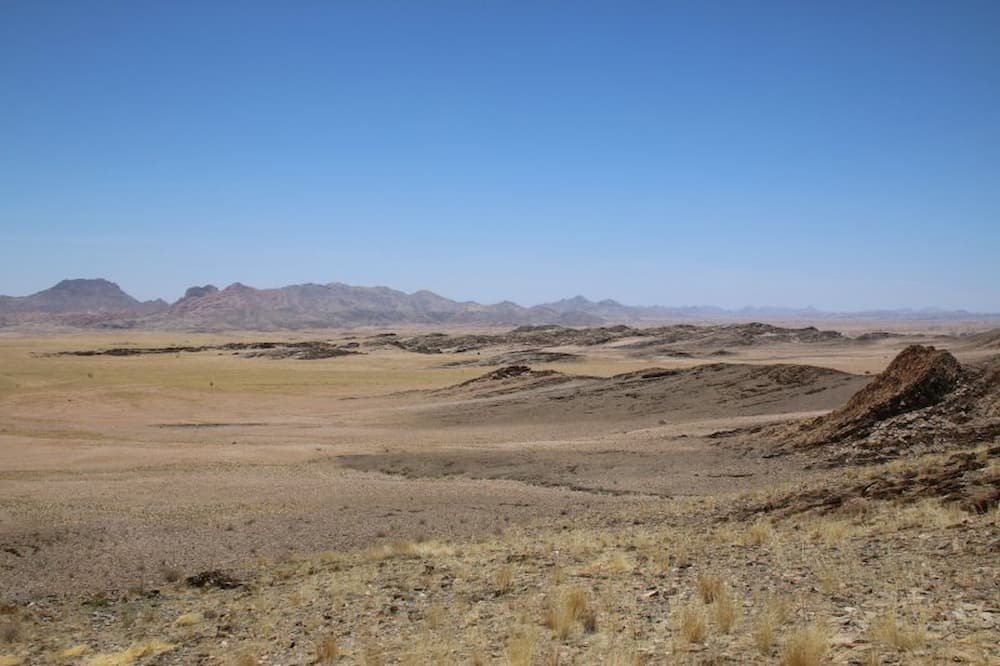
Rostock Ritz Desert Lodge is a lodge that blends beautifully with its environment, with minimal ecological impact. People that stay there are looking to immerse themselves in a desert environment.
Simply explore the surrounding area by walking one of the numerous trails. Make sure when driving that you stop frequently to take in the scenery.
A very popular feature of the Namib Naukluft Park is the Welwitschia Trail which lies just east of Swakopmund. Some of these plants are estimated to be around 1,500 years old and you can take a scenic drive along the Welwitschia Trail stopping at recommended points, one of which looks over a valley known as Moon landscape, which is obviously named! Take time here as the scenery is really eerie and it is hard to believe that you are still on Earth. Follow the route which is marked with stone cairns so you know when to stop and learn something new about the environment.
The Welwitschia plant is a botanical curiosity and there are large concentrations found along this trail. These weird species have separate male and female plants which are pollinated by beetles, which are also pretty rare, so it is a wonder that these plants have managed to survive for so long and in such an arid and inhospitable environment. The end of the trail is marked by one of the largest plants in the area and is certainly worth a visit.

Cornerstone Guesthouse, Swakopmund, is one of the friendliest places in Swakopmund and the owners’ knowledge is incredible. Stay at either their B&B or one of their self-catering apartments on the seafront.
There are numerous things to see and do at Swakopmund, ranging from water-based activities to desert safaris. Things to do include catamaran trips to see pelicans and flamingos, canoeing with seals, desert tours to see the smaller animals and a remote Sandwich Harbour experience.
Continuing up the coast from Swakopmund, suddenly you are away from human habitation with only the Atlantic Ocean crashing onto windswept beaches. This is treacherous for shipping and there are numerous shipwrecks along the coast, particularly further north in the Skeleton Coast National Park.
The coastal road is very bleak and arid despite the proximity to the sea. You may think that few things grow here, and you are probably right, however, just north of the turnoff to the Cape Cross Nature Reserve is an enormous lichen field where you can get out of your car and sprinkle a little water on the ground and see them all come to life. It is extraordinary.
Driving along this road you probably won’t have seen much wildlife but turning off to visit the Cape Cross Seal Reserve you are suddenly assaulted with the sound and smell of thousands of seals, a population increasing to more than 250,000. There are huge barking bulls, females calling for their young and black seal pups bleating pitifully for milk – it is a deafening cacophony enriched by the acrid smell of seal dung. Despite this rather unpleasant intrusion on your senses it is mesmerizing to watch the mini-stories within this seal colony unfold!

Cape Cross Lodge is set on the bleak Skeleton Coast and this harsh remoteness is what makes it so memorable.
Driving up the coast is awe-inspiring to see some of the shipwrecks and a visit to the Cape Cross Seal Colony is a must.
Moving inland from the coast, you can see stretches of land strewn with boulders, rocky outcrops, and geological formations in a multitude of colors. Namibia’s World Heritage site, Twyfelfontein, is an open-air gallery of over 2,000 rock engravings, representing one of Africa’s largest concentrations of important rock art. Estimated to be around 6,000 years old, it is believed that these pictures of creatures and signs were created by the medicine people to record their experiences among the spirits. These beautiful rock engravings are a connection to our past and a legacy to be protected.
There are a number of different trails to walk along to see these beautiful carvings, and they have been cleverly designed for different levels of fitness. Taking a guided tour allows you to learn more about the people once living in this harsh environment. There are even pictures of flamingos here, which makes you wonder whether the area had water, or whether it was from people who had traveled the vast distances from the coastline on foot.
Close by is the Petrified Forest where a cataclysmic event millions of years ago changed enormous tree trunks into stone, Burnt Mountain which burns a brilliant scarlet red as the sun sets, and the Organ Pipes which are another geological curiosity of the area.

Mowani Mountain Camp is beautifully blended into rocky outcrops and some of the luxury canvas rooms have outdoor baths and showers in the overhangs of the local rocks. Wake up to the peace and tranquility of the desert and the spectacular view onto the vast open plains of Damaraland.
A visit to Twyfelfontein is a must, and also a safari to search for the elusive desert elephants is highly recommended. Take time to watch the sun go down on top of the warm rocks and watch the colors change from pale golden yellow to deep russet red.
Traveling even further north from Mowani, there is the opportunity to explore the vast concession area that is home to a number of rare black rhinos. If you have the time then this is an absolute gem of a place and you will certainly be in the middle of nowhere!
Desert Rhino Camp works in conjunction with Save the Rhino Trust and here you can participate in tracking black rhinos. Be prepared for a full day of traveling and immersing yourself in the environment. The undulating terrain of Damaraland is very difficult to do justice in describing the scenery: if you are agoraphobic certainly do not come here. But if you are into ever-changing panoramic views, contrasting colors, and the sense of being in the middle of absolutely nowhere, then this is certainly the place for you.
The anticipation of seeing these endangered animals is well worth the full-day safari and you may even get the opportunity to see lions, hyenas, and other animals. It is the ultimate safari experience in an arid environment. And the best thing is that at the end of the day you can watch the sun set over the magnificent scenery – an unforgettable experience.

Desert Rhino Camp is in a vast private concession and the enormous luxury canvas has private verandas overlooking a vast expanse of scenery which is an absolute privilege to stay in.
Track adopted black rhino and other wildlife and experience the privilege of being in some of the most stunning scenery that you may ever have the opportunity to visit.
From Desert Rhino Camp the road winds its way through some incredible passes and over some amazing mountain ranges towards the large flat expanse of Etosha. Etosha National Park is one of southern Africa’s most spectacular wildlife reserves and its uniqueness in wildlife sightings justifies its title as the country’s flagship park. The enormous salt pan of Etosha, which means Great White Place, temporarily fills with water during the rainy season which attracts a host of flamingos and pelicans.
Normally Etosha is an arid area with water normally only present in the pans dotted around the park and these permanent waterholes entice many animals into drinking. The beauty of Etosha is that it has marvelous game sightings and the expectation of seeing something remarkable keeps you alert for hours on end.
Doing a self-drive across the park involves the excitement of planning a route trying to encompass as many waterholes as possible. However, don’t switch off when driving from one waterhole to the next, as some of the most incredible sightings can be seen away from these busy areas and you may have that unique opportunity of having a one-to-one with one of the “big five” game animals – a lion, elephant, Cape buffalo, leopard and rhinoceros. So keep your eyes peeled.
The beauty of driving yourself is that you can stop and look at things for as long as you want to and you don’t get swept up with other people trying to spy as many animals as possible. Some of the best memories when visiting Africa are collected by traveling at a slow pace and allowing the surroundings to speak for themselves. So pay attention to the smaller things, sit and relax at waterholes, and just enjoy the scenery – you never know what is coming around the corner.

Staying outside the park is much more cost-effective and there are many lodges that have their own waterholes as well, so you can sit in front of the floodlit arena and have your own play pan out for you. Try Ongava on the western border and Mushara or Onguma on the eastern border – all are unique and quintessential safari camps.
Wildlife of course! Immerse yourself in this incredible national park and make sure you give yourself enough time to cross it. Nine hours should be enough to cover 190km (118mi).
When you think of “trekking” most people might not immediately contemplate Pakistan. But the Northern areas better known as Kashmir, have some of the most majestic treks on the planet. The two most popular are the K2 base camp, where you can see the dramatic Karakoram Mountains while walking up the Baltoro glacier, and the spectacular Biafo Hispar glacier trek also known as Snow Lake.
Both of these treks travel deep into very remote territory, and being part of an expedition with tents, food, and cooking equipment for a couple of weeks is mandatory. There are no tea houses to support you like in Nepal. Snow Lake requires a good level of physical fitness with some previous trekking experience plus an adventurous attitude. The weather can be unpredictable at times ranging from very hot days in the beginning to freezing conditions as you get higher up the glacier and cross the Hispar La. Trekkers are however rewarded with some of the most striking scenery imaginable. Here are a few highlights from our trek for inspiration.
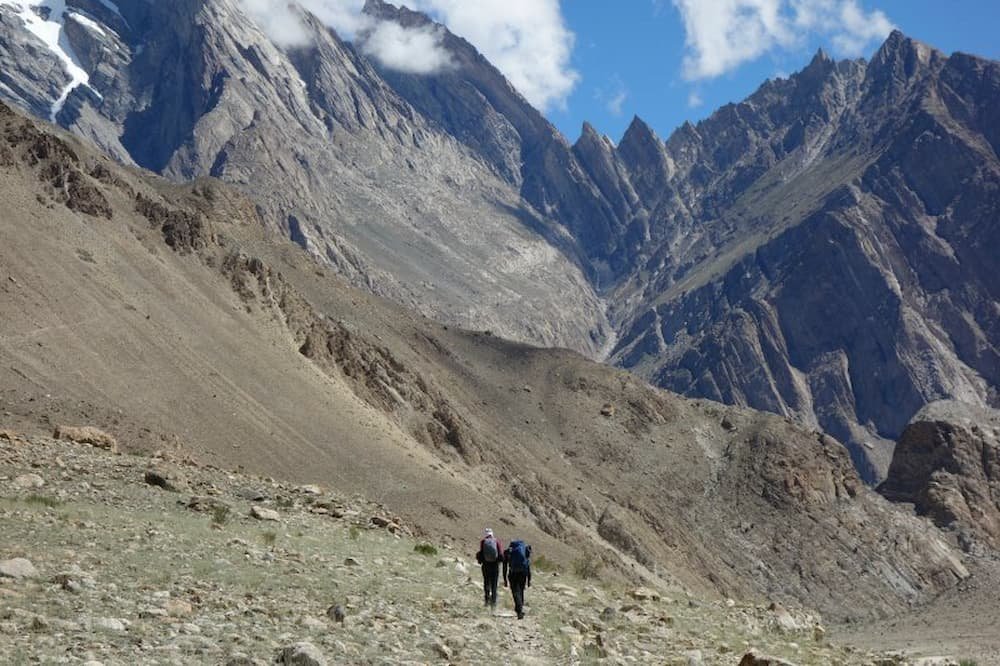
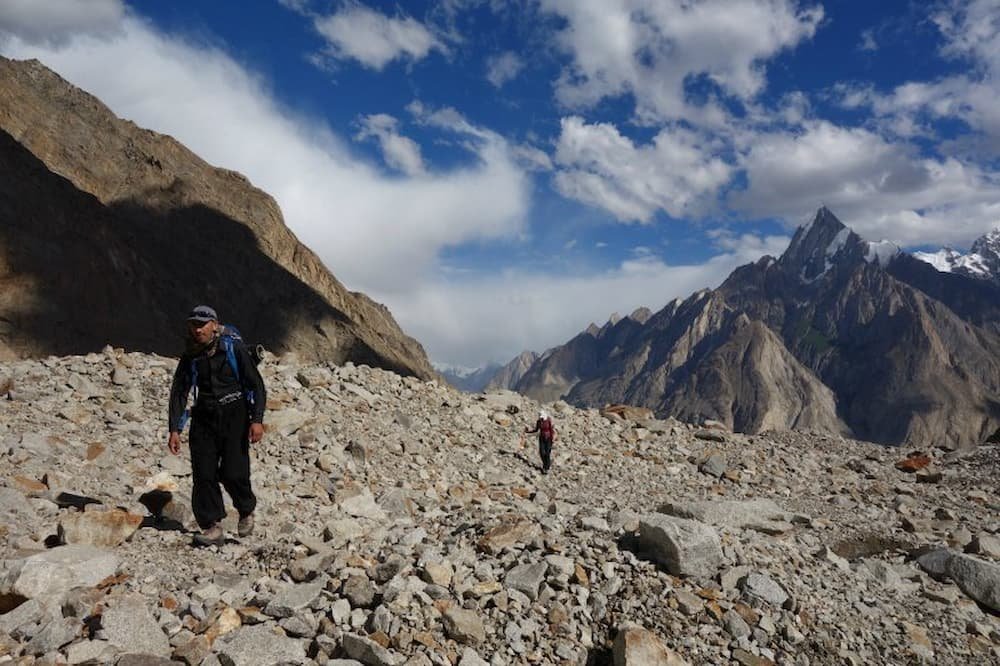
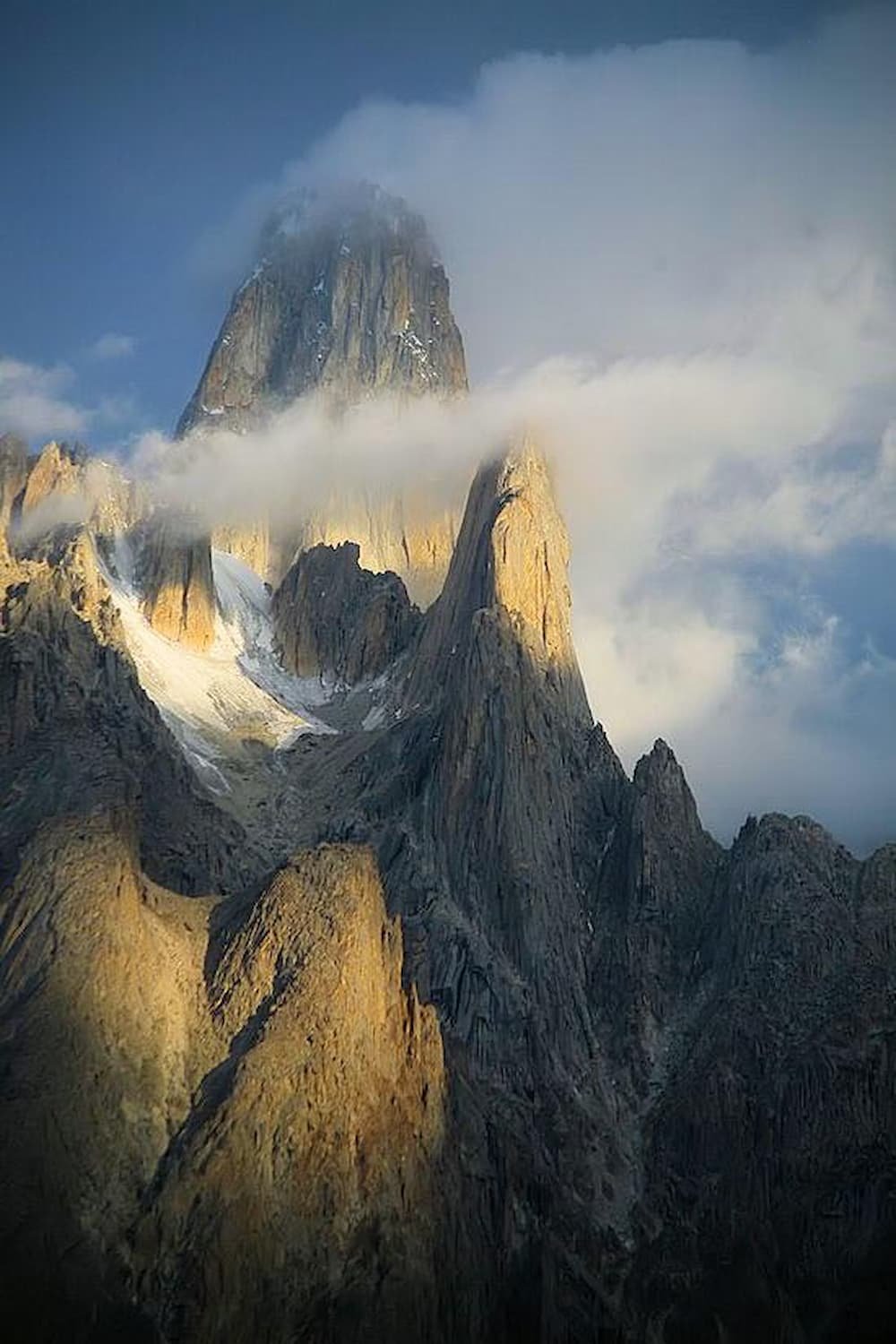
By four in the afternoon the sun disappears behind the towering cliffs. On the far side of the glacier, we are treated to an amazing light display on the stony towers. They bask in golden rays, the light showing off their rough texture.
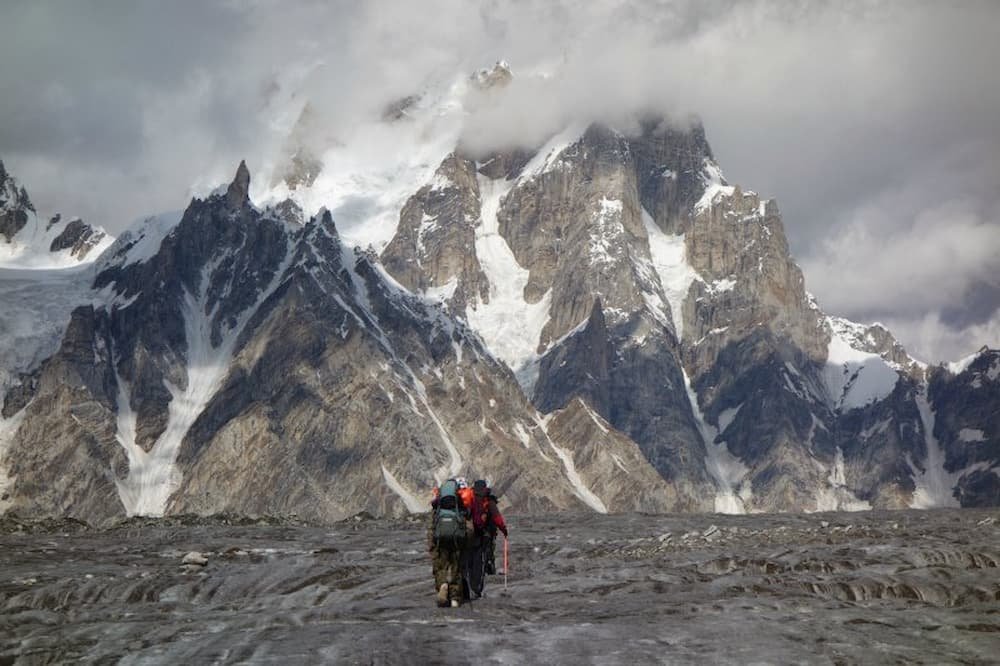
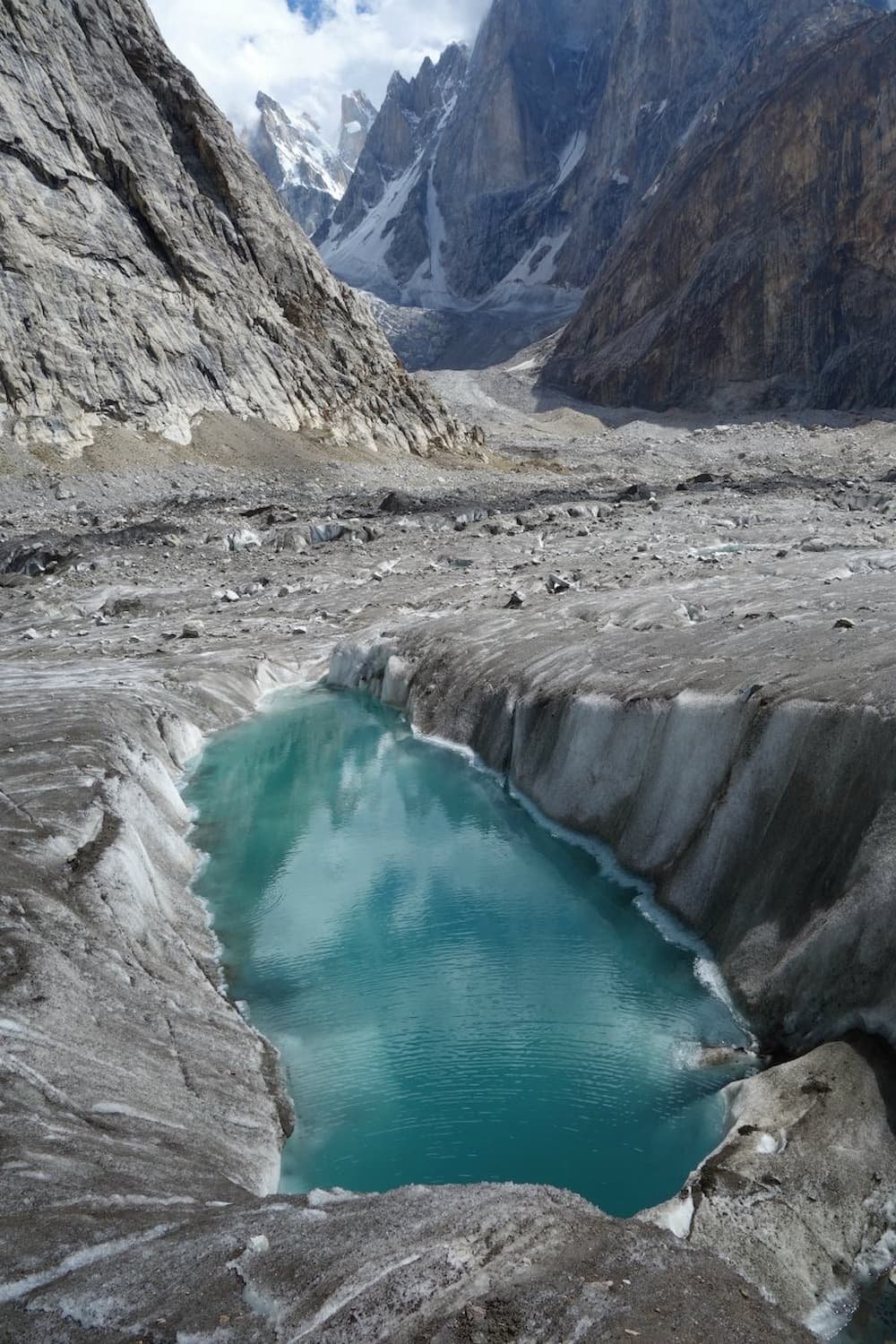
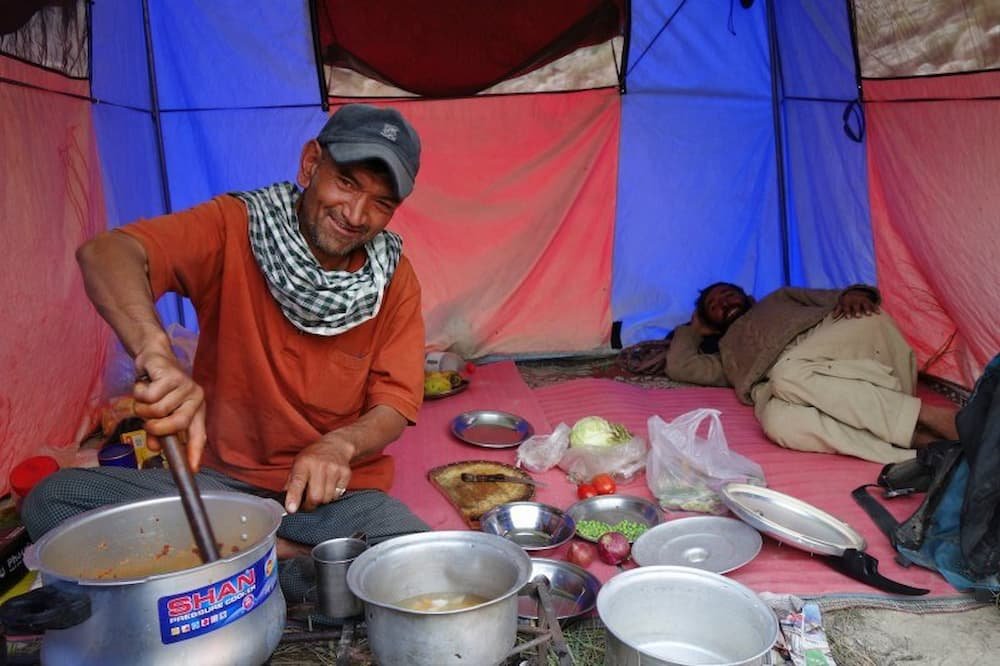
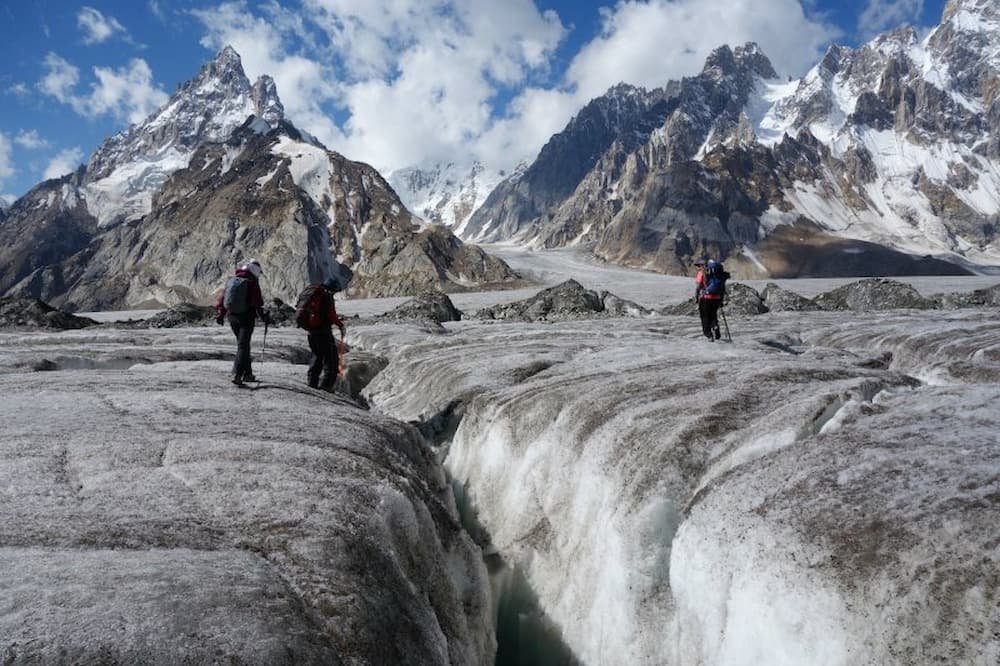
Don’t. Look. Down!
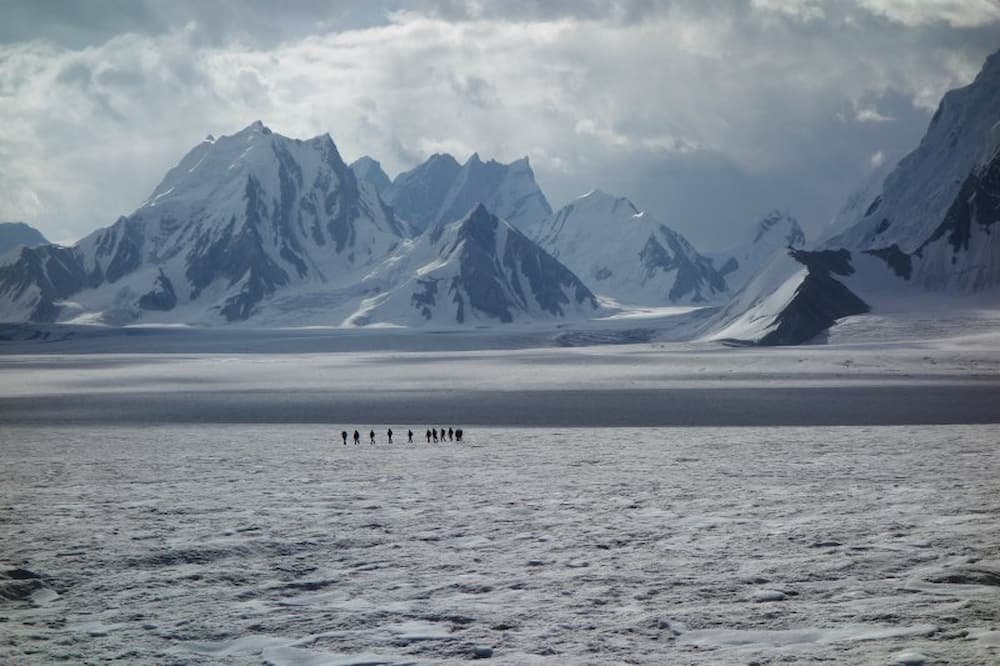
Tiny human figures pale in comparison to the vast enormity of Snow Lake
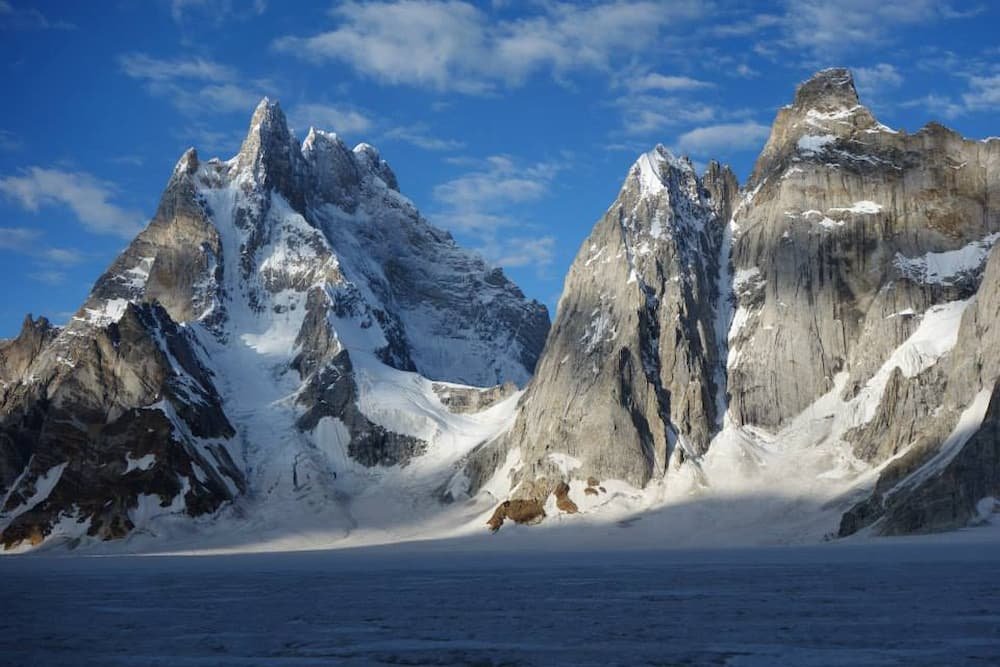
It’s scenes like this that make you forget how cold and tired you are
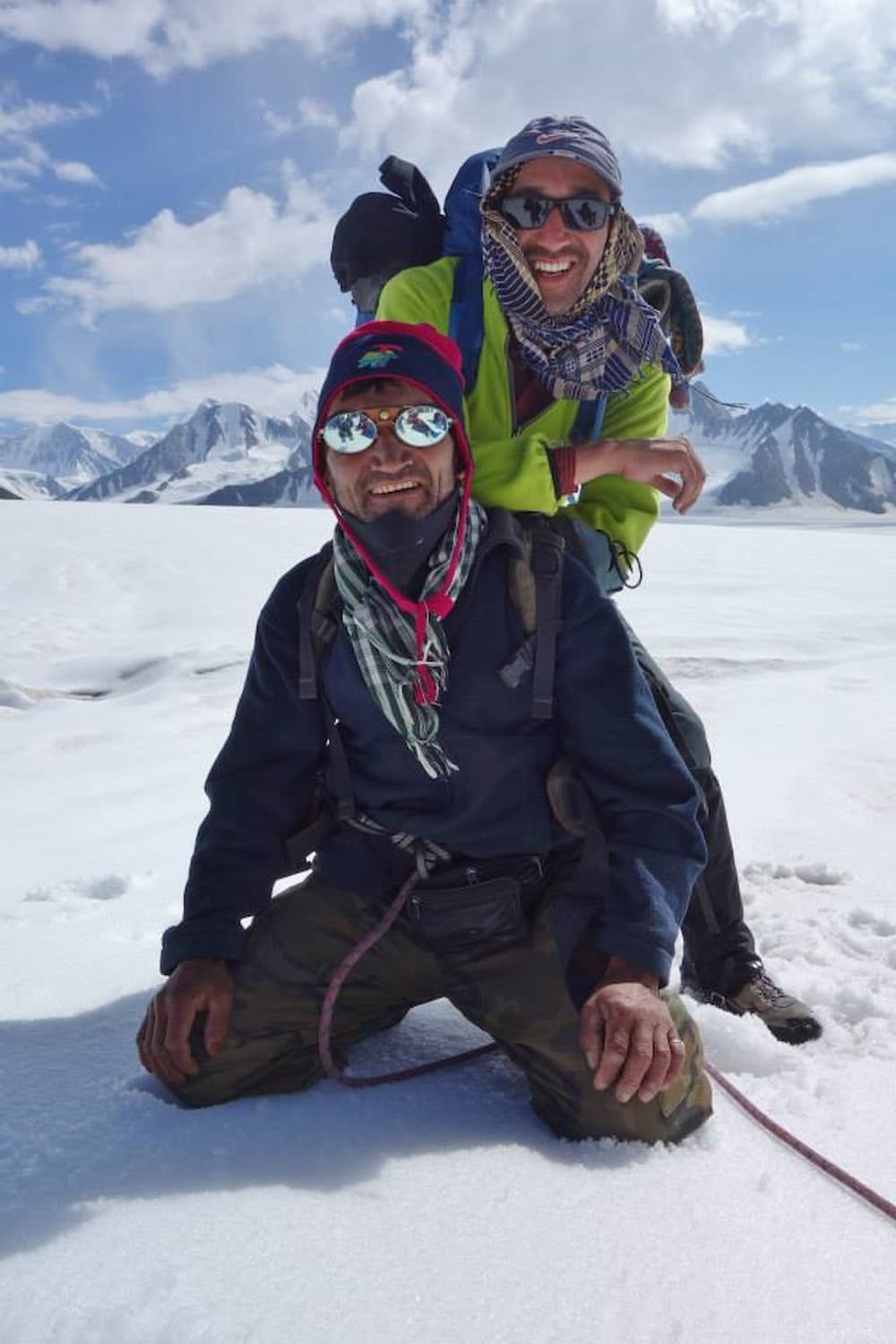
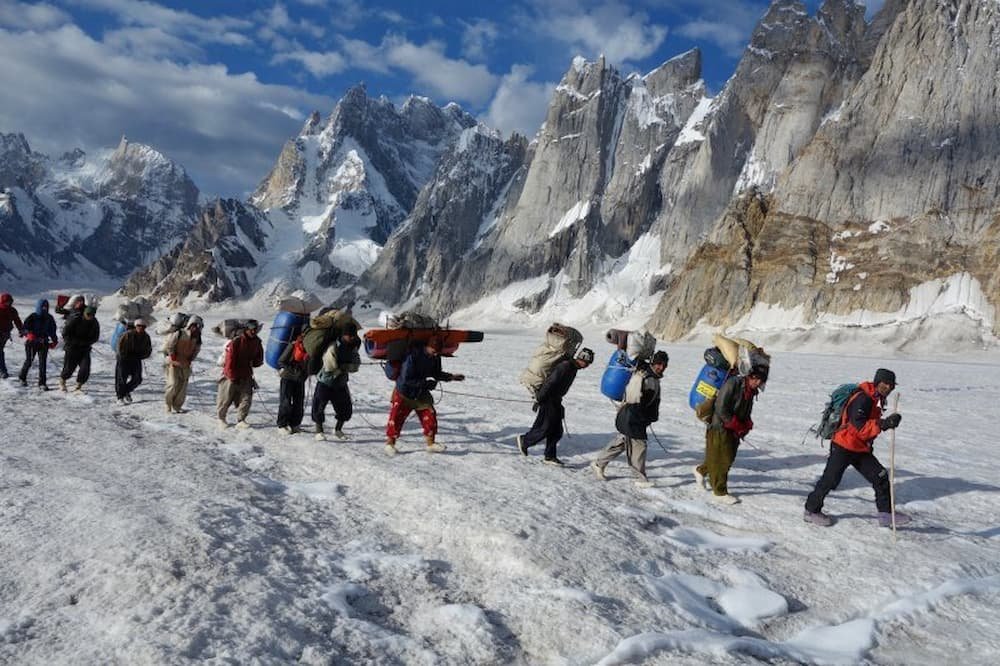
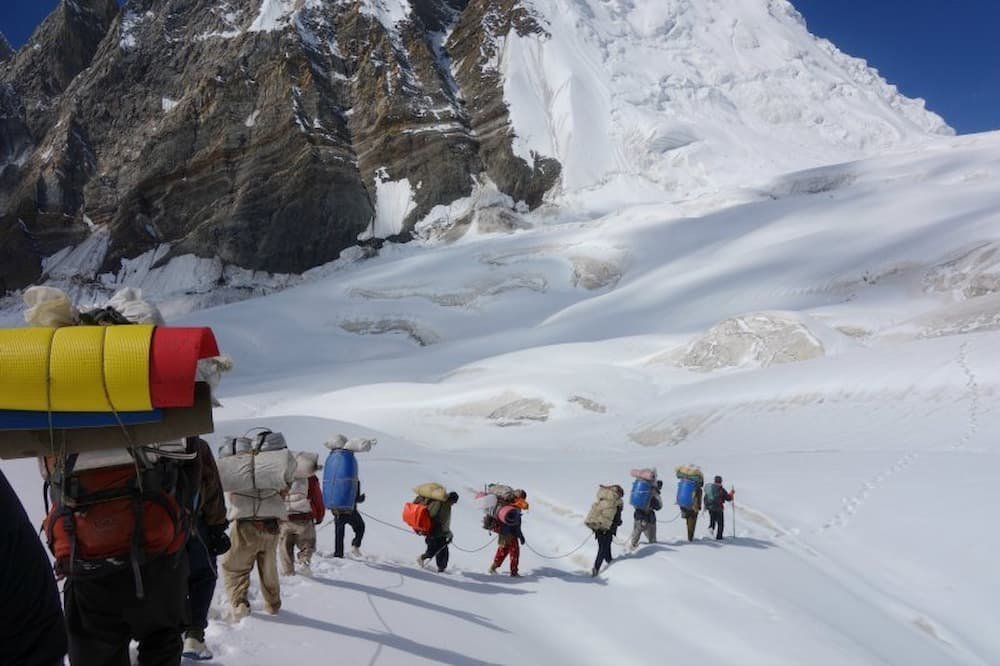
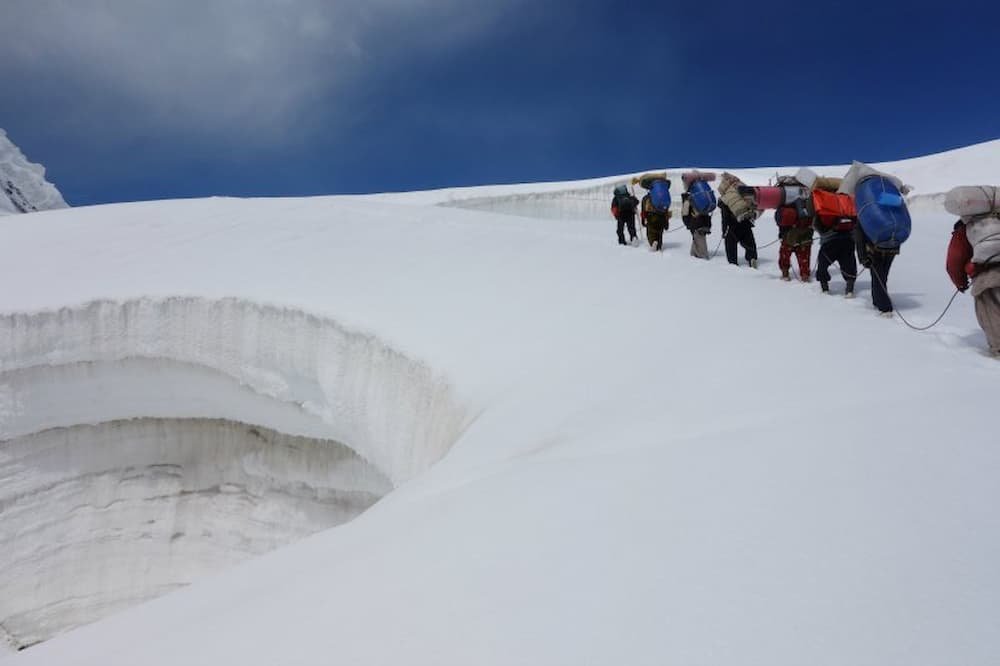
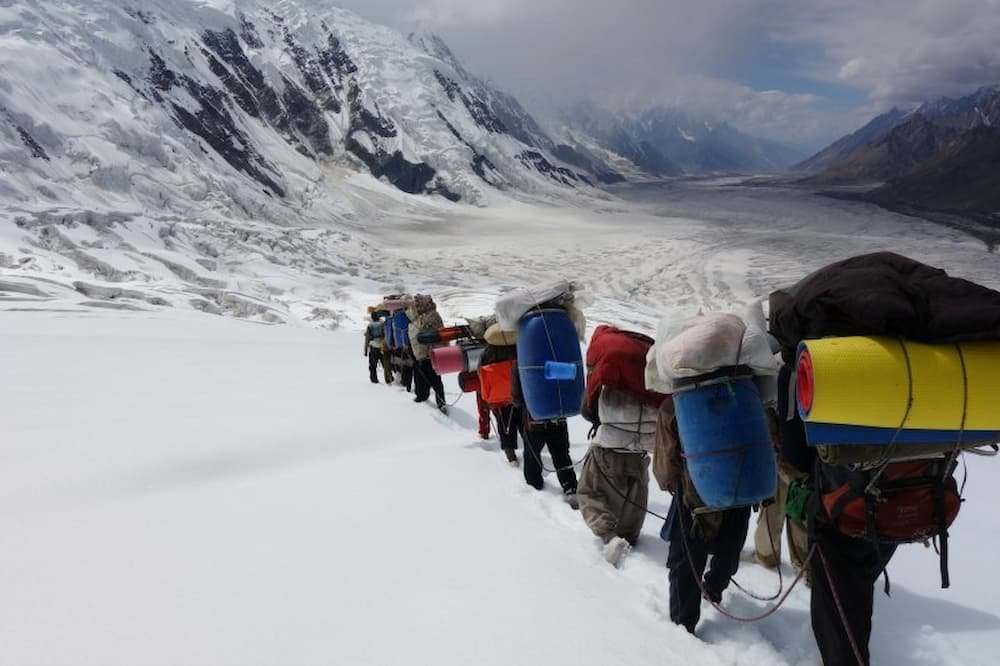
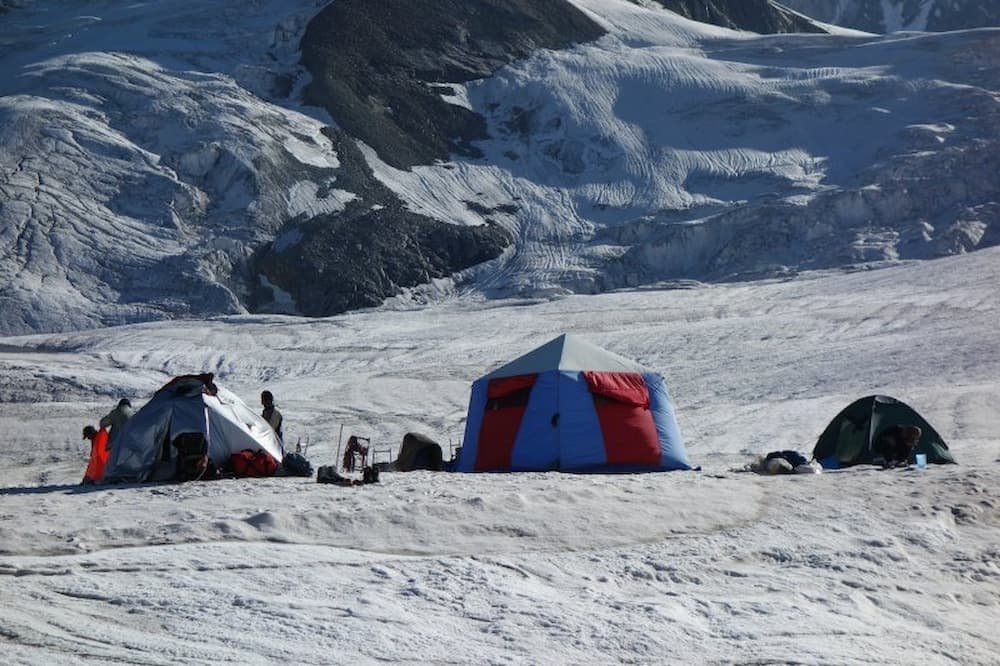
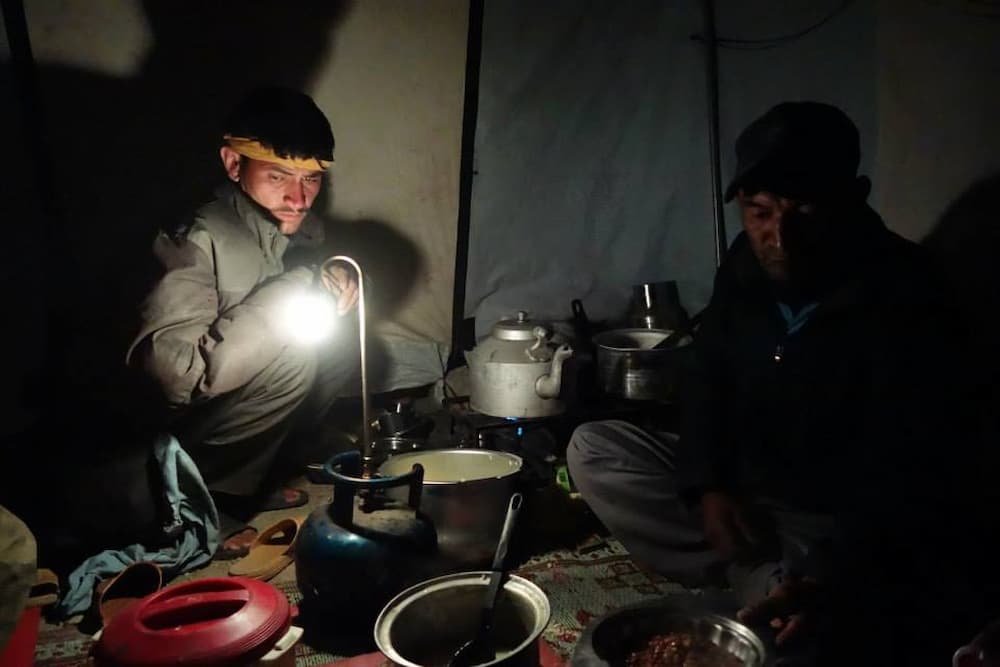

The night sky truly lights up
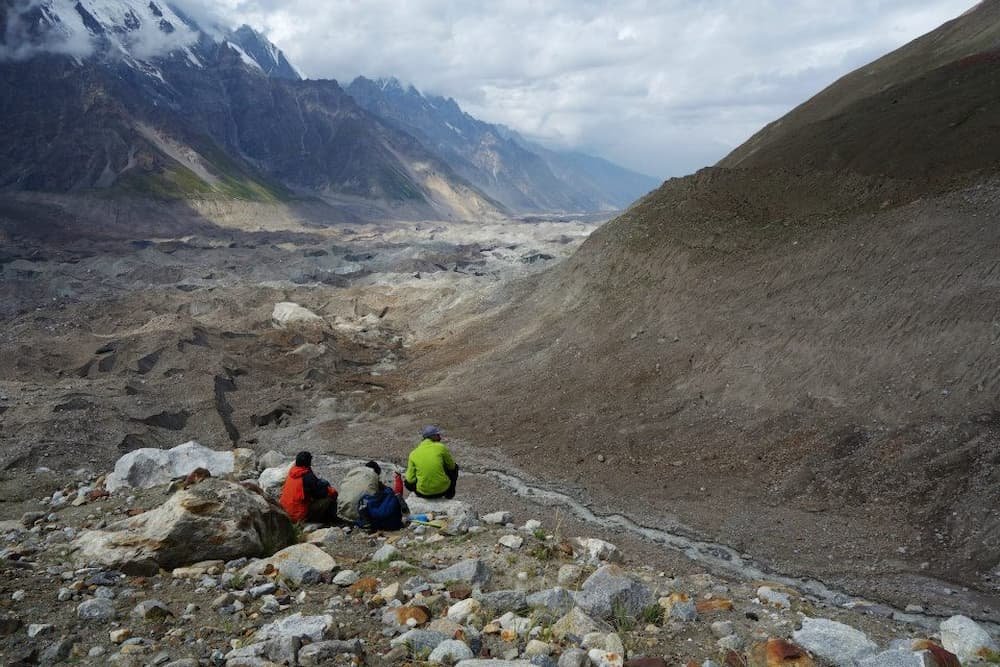
On the 8th day, we come across the confluence of two glaciers. The morning has been difficult already crawling across a series of landslips. Now in front of us, rocks and crevasses stretch for over 2km. It takes your breath away as well as some of your resolve.
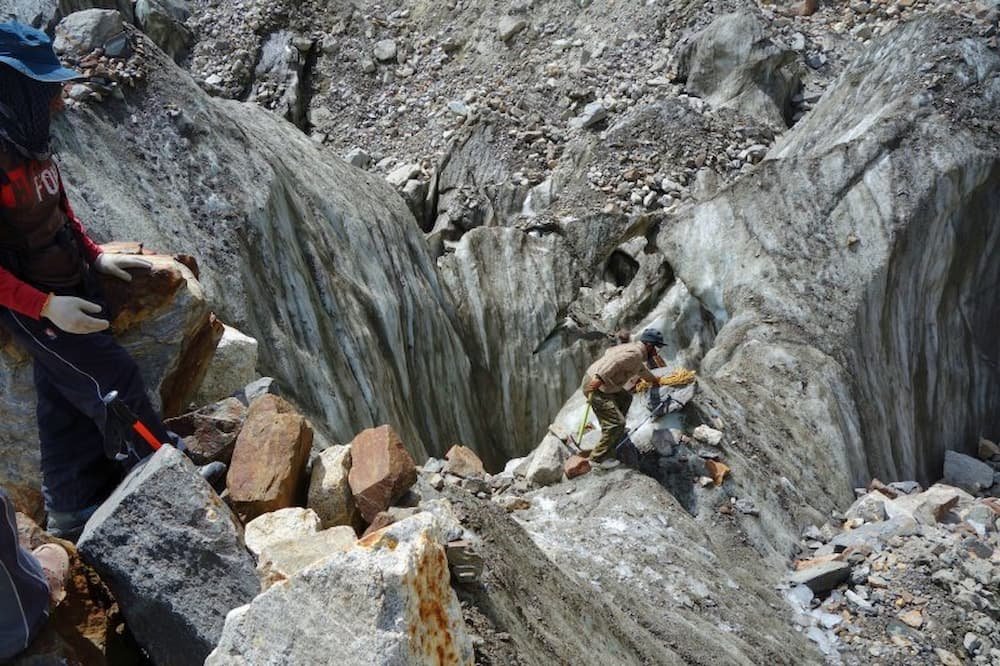
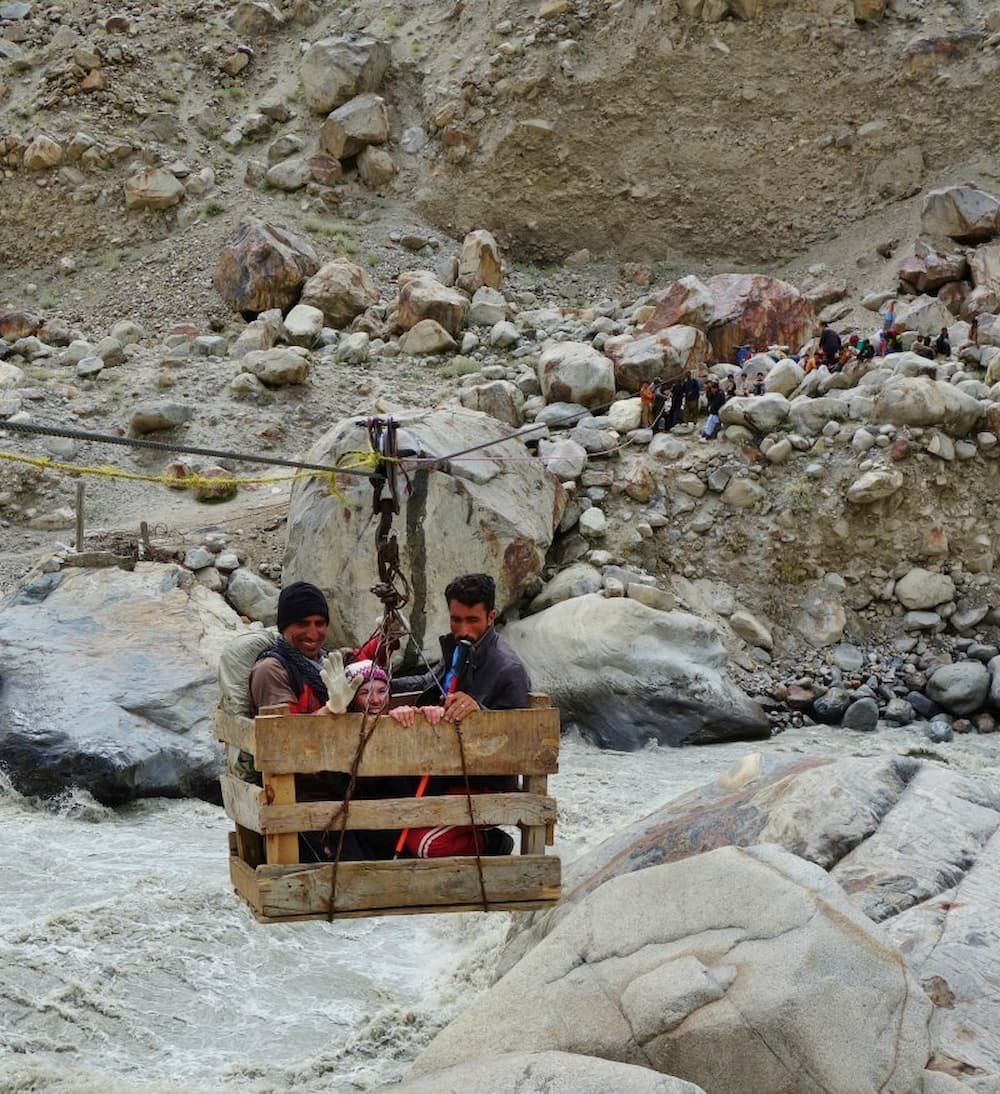
The bridge had been washed out by summer floods so we had to cross the river in a makeshift basket suspended by a cable. Being pulled across by a rope made for a bumpy, yet exhilarating ride.

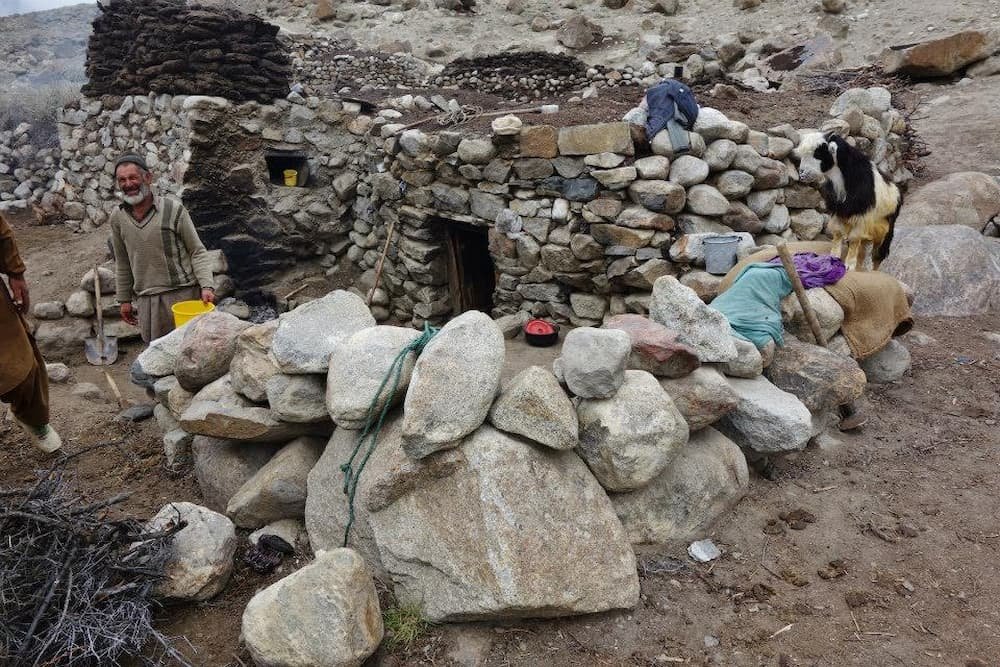
Some extremely impressive architecture going on here. Can you even imagine trying to hoist these massive boulders into place?

A stark contrast between these wildflowers and the rugged mountains
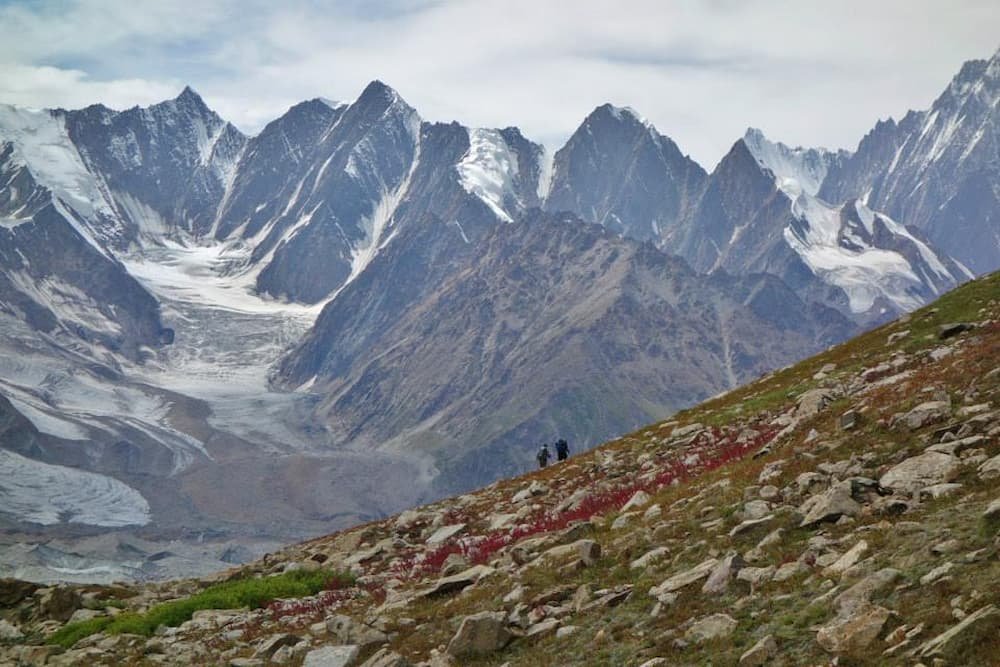
The ten-day Snow Lake trek is an excellent adventure, filled with challenges and spectacular scenery.
Each week we feature a new destination here on Backpacker Travel, in the form of a photo journal. If you are an aspiring photographer who is interested in contributing or have a suggestion for a particular place, please get in touch here.
Sri Lanka is a country that took us by surprise! The small island nation is home to a huge variety of landscapes and experiences – you can experience long beaches and palm trees, and a few hours later be in the cool climate of the Hill Country. With temples, national parks, beaches, and cities to choose from, planning your time helps you get the most out of Sri Lanka.

We decided that we had too little time to give everything a reasonable go, so we stuck to exploring the Sri Lankan Hill Country and tea plantations over two weeks. It was incredible and not at all rushed. The trains run through the Hill Country, and also up near the old temples of Polonnaruwa, the famous rock Sigiriya and National Parks, and down the coastline as well. It’s up to you what experience you choose and how much you want to cram into your time.
We felt like two weeks was a good amount of time for our specific journey, but most people recommend a month or three weeks to see all the various regions.
The booking system is difficult to navigate and cannot be done online unless you wish to go with a private train company – which is ExpoRail and the luxury Rajadhani Express. The private train companies will cost you more, and it’s actually just a private carriage attached to the normal train so it is not faster. This is still a viable option for those who want to guarantee a comfortable spot in an air-conditioned carriage and be organized.
If you want to catch a normal train, you must book tickets from one of the railway stations and it is ideal to book a few days in advance to ensure you get a seat. Trains for any route can be booked at a station, so for example, if you are at Colombo Station you can book a train for Kandy to Ella in advance.

The trains are very cheap and provide a lot of beautiful scenery. The prices for our trains were:




Train fares differ depending on the class and length of your journey. It does cost slightly more to reserve your seat ahead of time, but showing up at the station last minute is quite a nightmare as even if you are lucky enough to get a seat, it will be in the very cramped in an unreserved third-class carriage.
We tried every class on the trains and found that second-class offered the best value. It was often a lot cheaper than first-class and it had windows that open so you can take photographs and hang out the windows, whereas first-class had sealed windows due to the air-conditioning. The Second-class is more comfortable than the third-class reserved and significantly more comfortable than the third-class unreserved. The biggest difference in class was between third-class reserved and unreserved.
There do not seem to be any official timetables and fare schedules online, but they can be found in the stations and there are a few blogs with very detailed information about train times around the country.
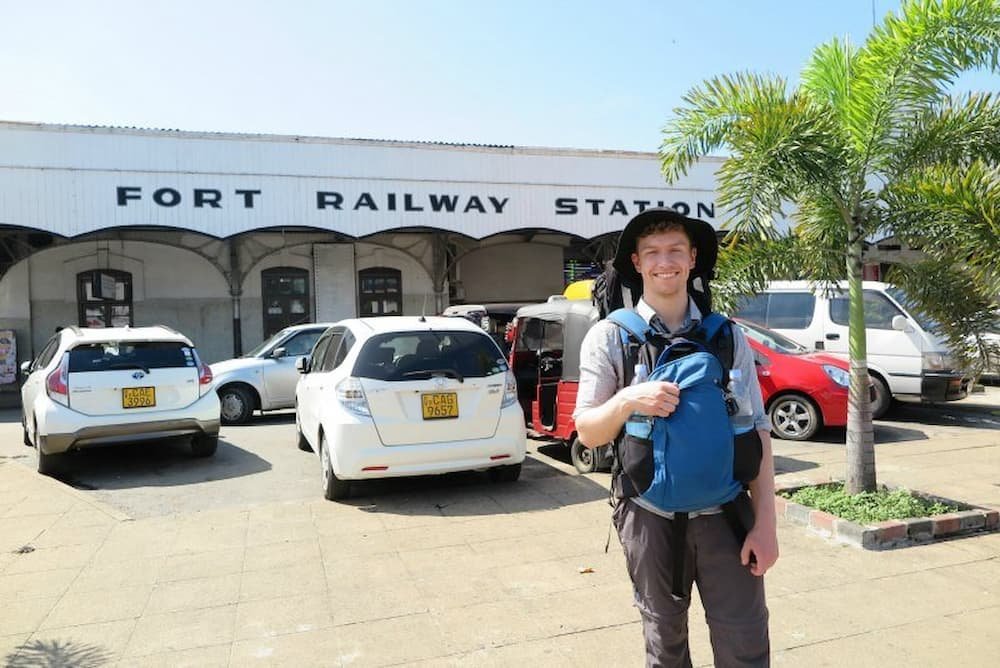
The train ride is a majestic experience that is more than just a commute. As you wind through the scenery in the old blue trains it feels like something out of an old-school movie. The trains move fast enough to be satisfying but slow enough that you can see Sri Lankan life go past the window in detail.
On the trains between Kandy and Ella, the views are mind-blowing. Hills full of neat rows of tea plantations are dotted with the white bags filled with freshly picked tea, and then soon after there are deep valleys with temples and beautiful villages. The luscious greenery and colorful evidence of human life made this a spectacular journey to remember.

Vendors hop on and off at various stations and offer tea, coffee, and snacks to recharge you on your journey. If you stick your head out the window you will see the train winding around the corners and dozens of others hanging out too. On the trains, there are plenty of interesting people to converse with and exchange valuable travel tips.
Trains are a great way to travel because you are able to move around, socialize, see the scenery and still get to your final destination. In Sri Lanka, trains are a fantastic way to see parts of the country you may not otherwise be able to easily reach. It’s a cheap option and far more comfortable than the buses, and it’s a memorable experience that we would recommend. If you are lucky enough to visit this beautiful and diverse country, you should do it by train.


During the recent holidays, we decided to forgo the New Year parties and spend some time away from the crowds. We packed our bags and set off on a road trip from our home in San Francisco down to Joshua Tree National Park in Southern California.
Joshua Tree National Park is located around 140 miles (225 kilometers) to the east of Los Angeles in the middle of the Mojave and Colorado Deserts. This large range of elevation makes for a varied landscape. The higher cooler Mojave, with its scattered Joshua trees and sporadic boulders, has a unique look and feel to it.
If you are into camping, hiking, and rock climbing, this place is epic. There are hundreds of trails and climbing routes for all levels of experience.

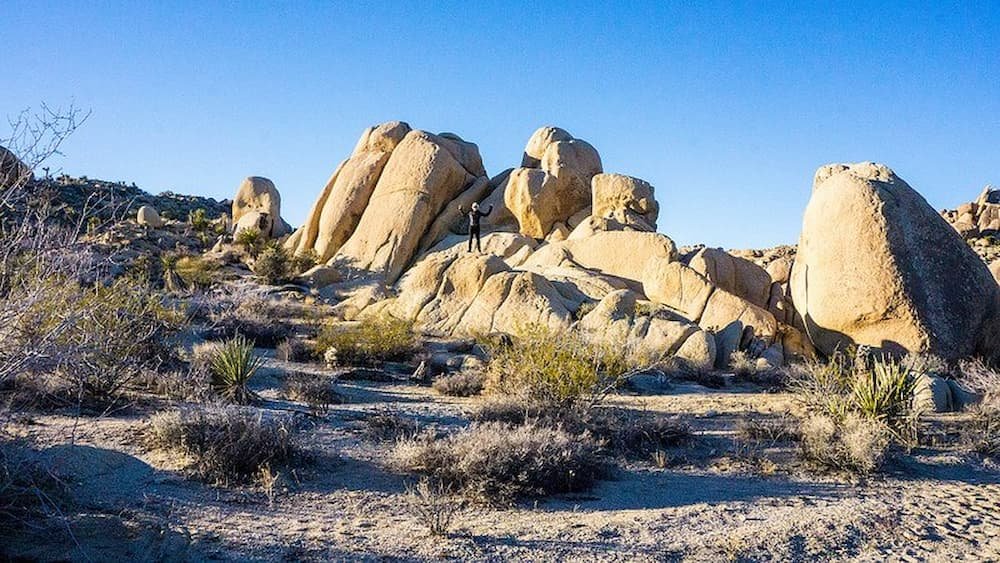

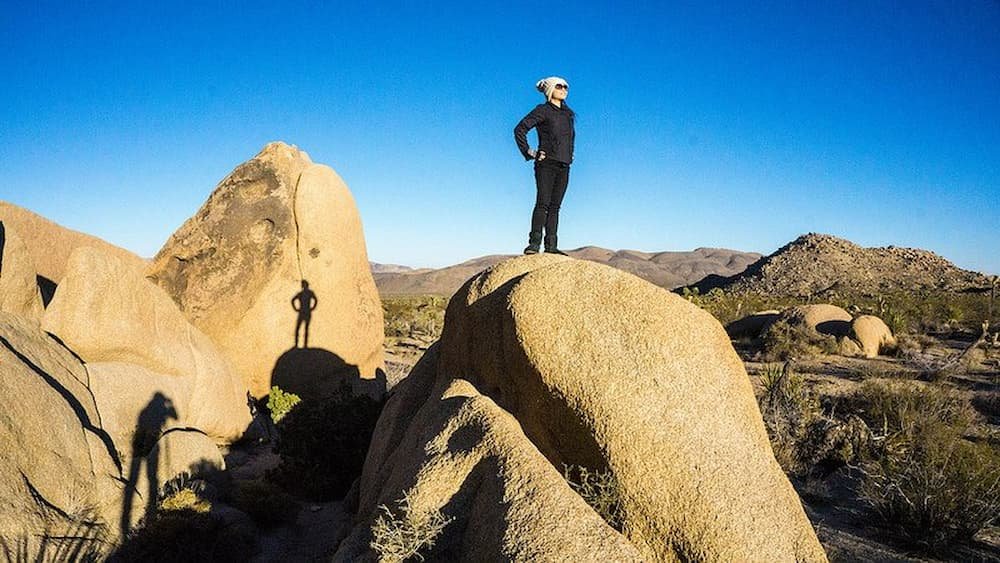


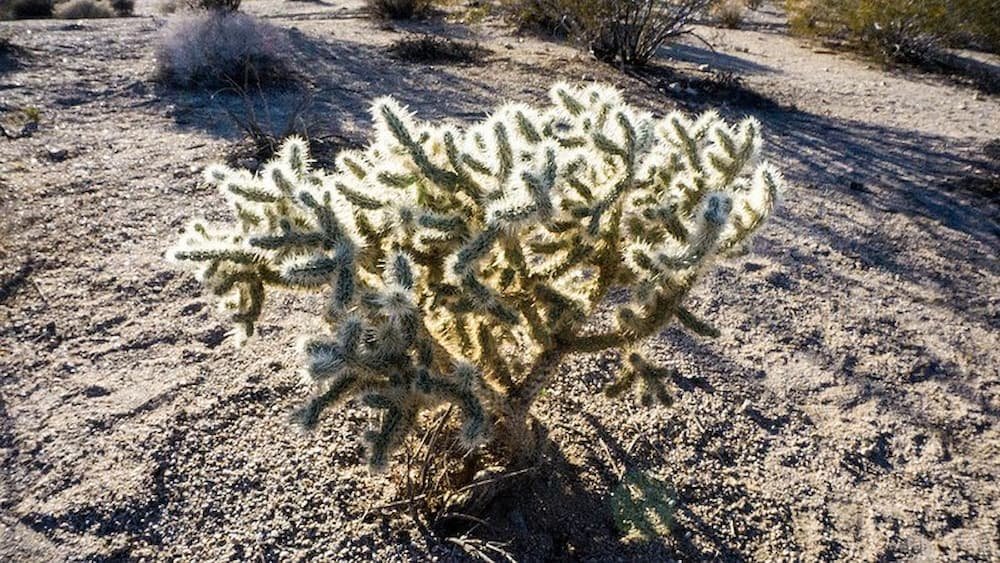
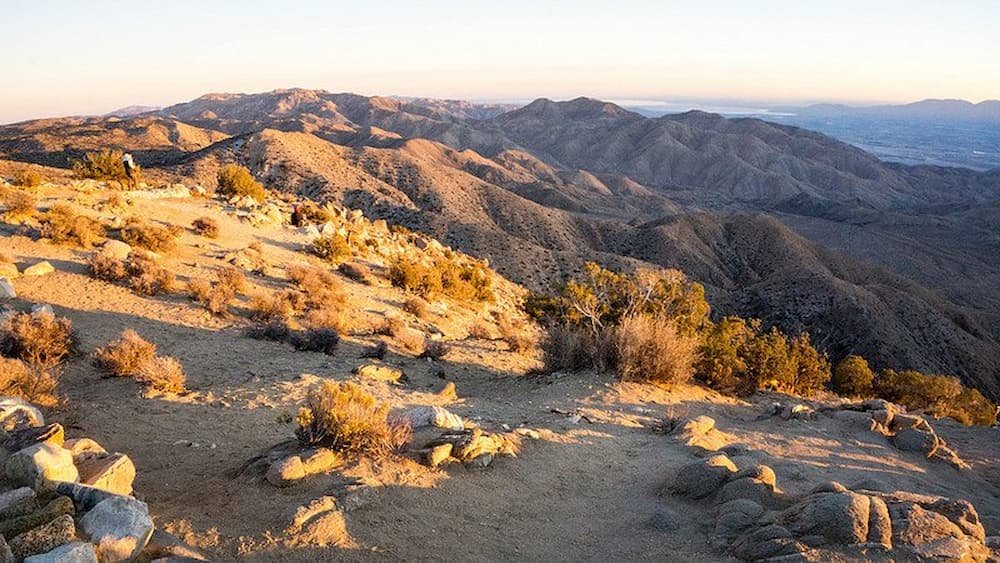
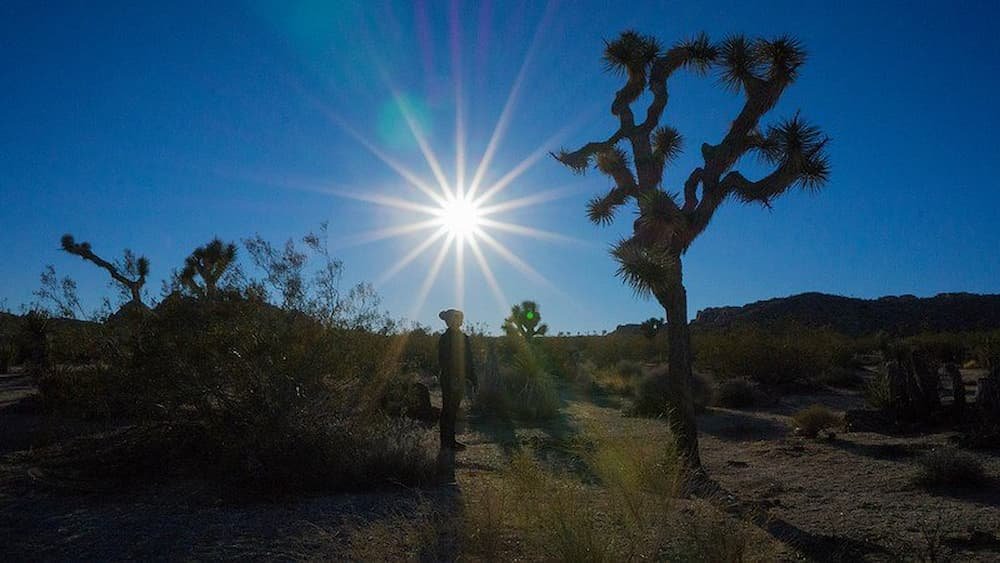









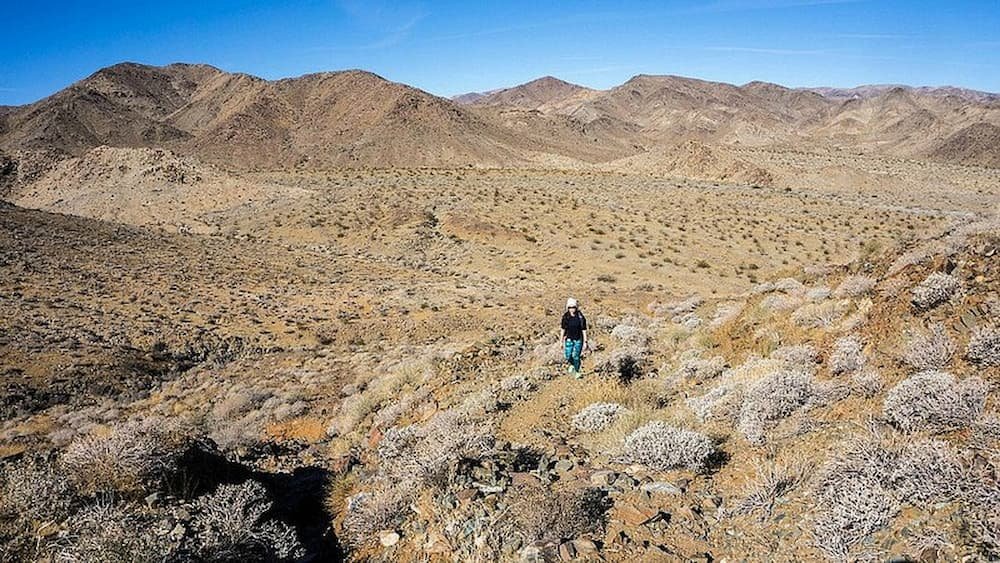






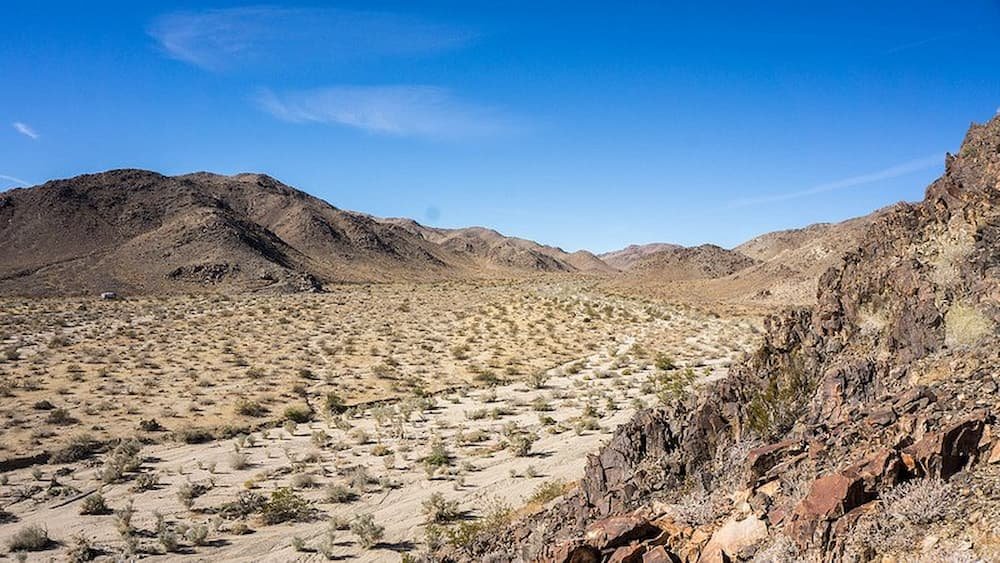
A New Perspective of Uluru. Wide-angled lens perspective of the iconic monolith from the sunset viewing platform at Uluru-Kata Tjuta National Park.
The Northern Territory is a vast federal territory in Australia – and the epitome of what you think of when you hear the word “outback”. Though the area spans 548,600 square miles (1,420,867 square kilometers) only 250,000 people call the Northern Territory home.
So what can you see and do in such a remote and barren land? A good place to start is the Red Centre – so-called because of the deep red soil, thanks to the high iron present in the ancient earth. In the World Heritage-listed Uluru-Kata Tjuta National Park, you’ll find Kata Tjuta (the Olgas) and Uluru (Ayers Rock) – awe-inspiring large domed rock formations, while a hike through Kings Canyon or the West and East MacDonnell Ranges will leave you speechless with spectacular views of the horizon. One of the only towns for thousands of miles, Alice Springs, is a good place to stay, meet other travelers and seek out the local nightlife.

Further up north is Darwin, the capital of the Northern Territory and one of the fastest-growing cities in the country. Here, you’ll find a unique blend of the outback and a modern city, with shops selling Aboriginal arts and crafts, delicious Australian and international cuisine, and access to nearby nature retreats. Less than two hours’ drive from Darwin is Kakadu National Park, approximately half the size of Switzerland and featuring Aboriginal rock art, incredible ancient rock formations, and a plethora of flora and fauna.
Don’t forget that visiting at different times of the year will expose you to the drama of the wet season when the rain is relentless; while the dry season means you’ll be scavenging for the last remnants of water left in the soil. And while being close to the equator means that days are typically hot and dry, in the Red Centre winters can mean that nighttime temperatures can reach below 0 degrees celsius, so bring warm clothes!
But this is just scratching the surface for such a vast region of land. Whether it’s seeing ghost gums or countless termite mounds on long stretches of road or meeting Aboriginal communities whose ancestors co-existed on this land for up to 70,000 years (or more!) ago, the Northern Territory is a great place to visit and explore.


Seriously though, there is a very dangerous risk of getting too close to the water and winding up being lunch for one of these huge reptiles. Kakadu National Park.
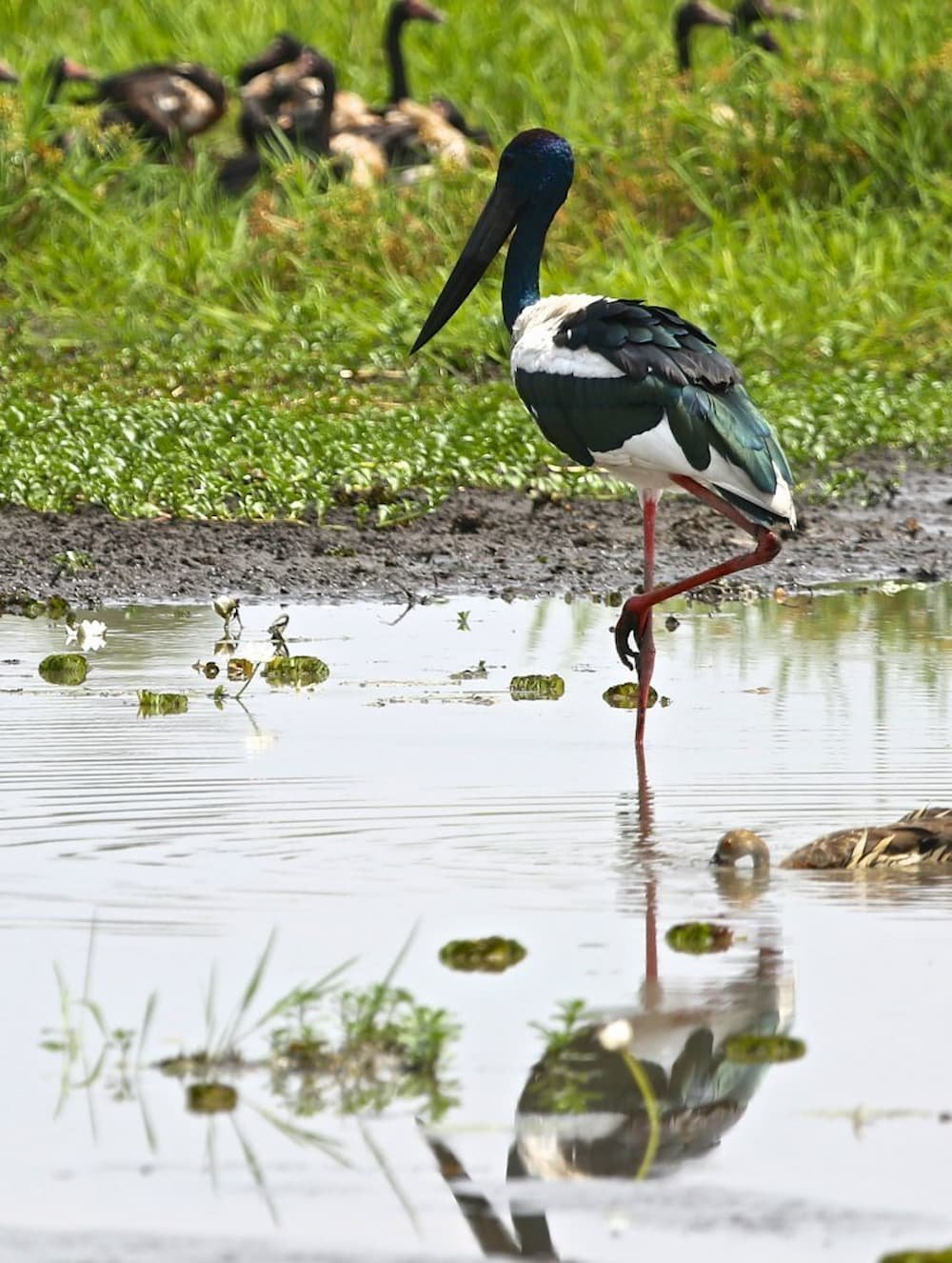

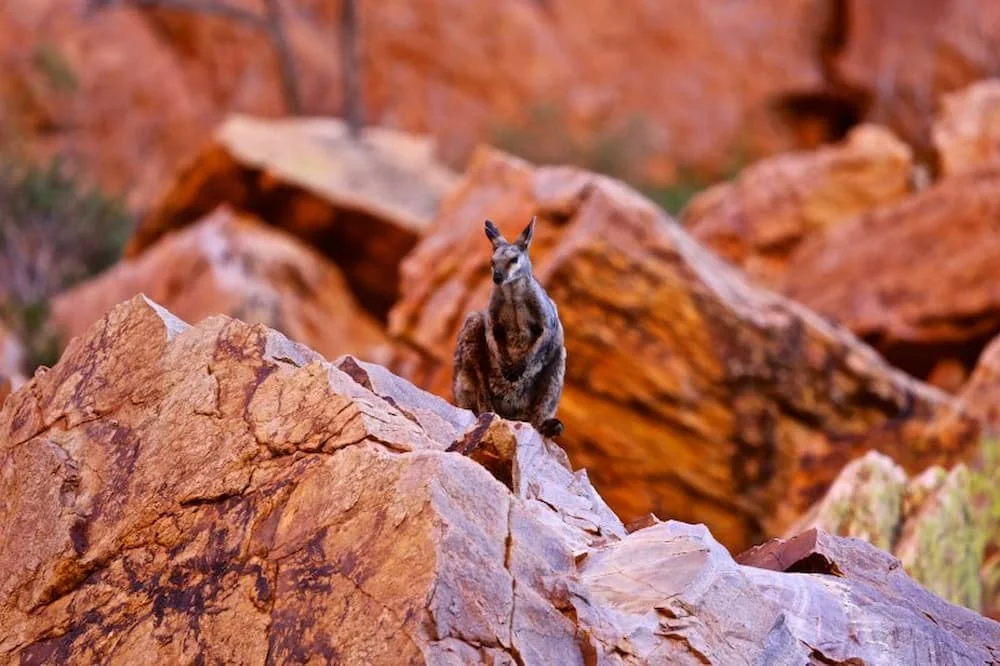



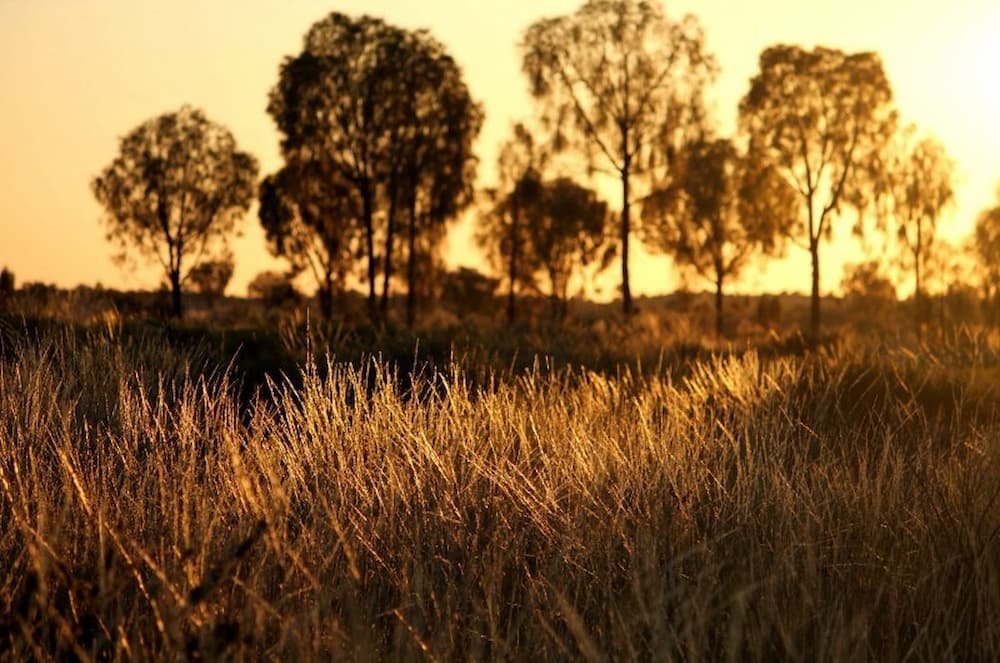

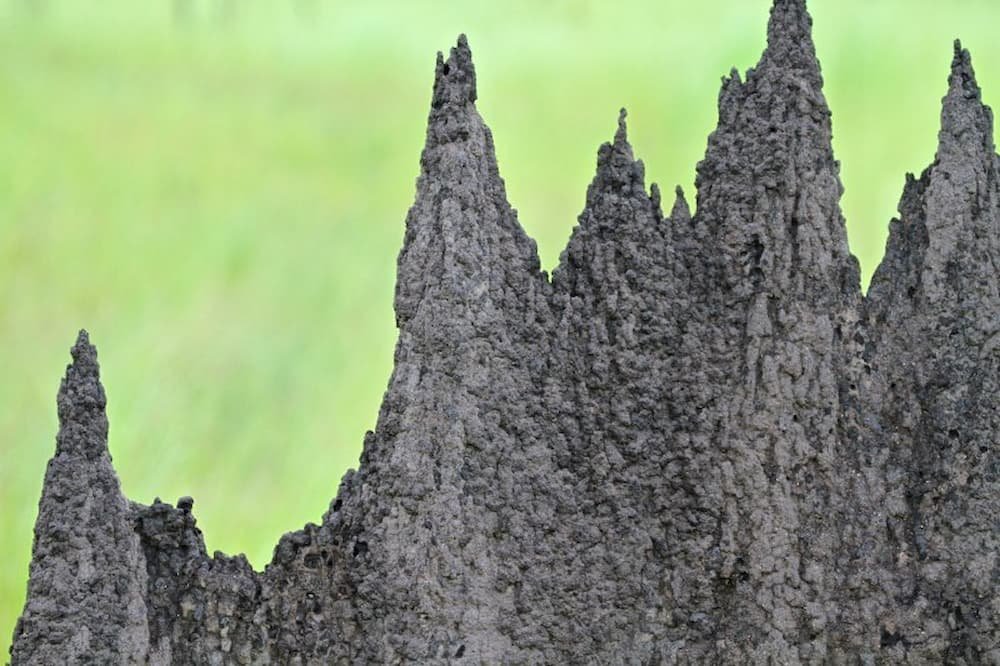
These termites build their mounds so as to align them on a north-south axis. This allows the termite colony to benefit from the warmth of the sun in the morning and in the evening with the hottest part of the day minimized as the sun shines down on the narrowest part of the mound from directly overhead.


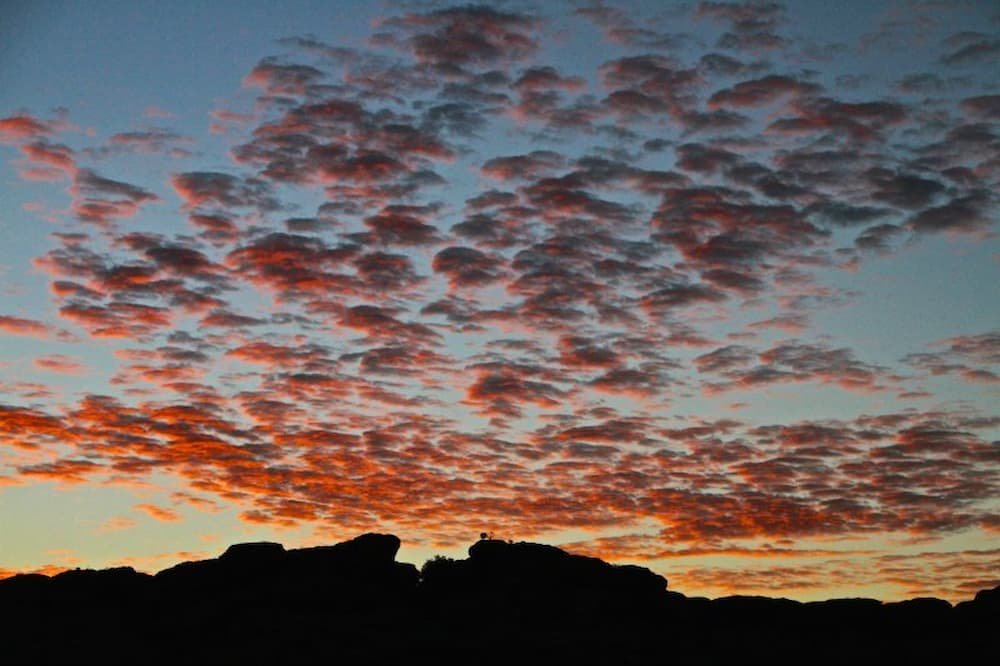

Ancient aboriginal rock art is featured at the Anbangbang gallery at Burrunggui rock (recently known as Nourlangie Rock). Kakadu National Park.
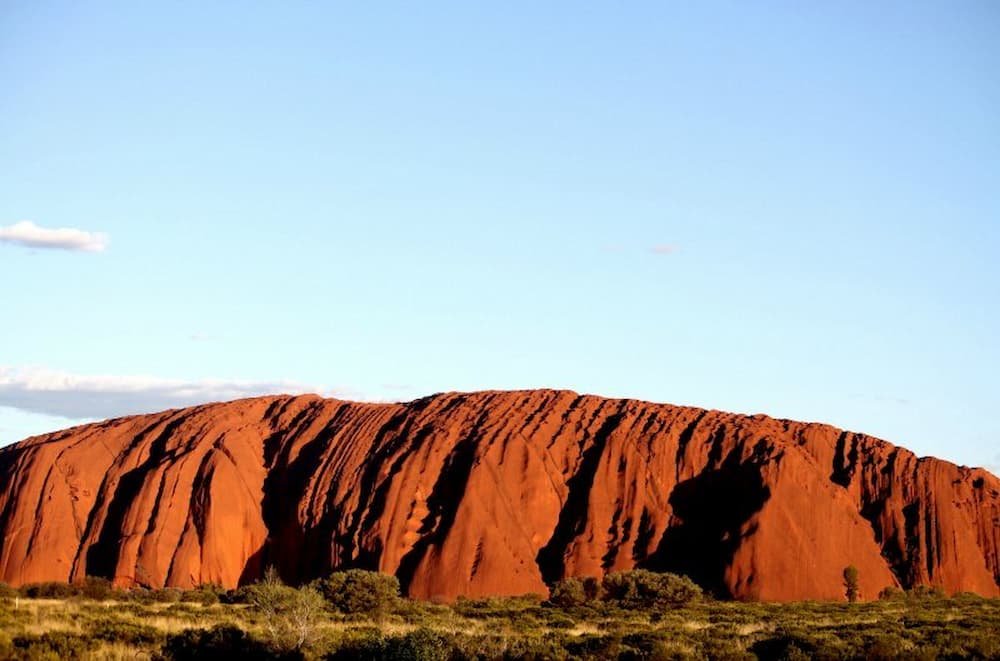
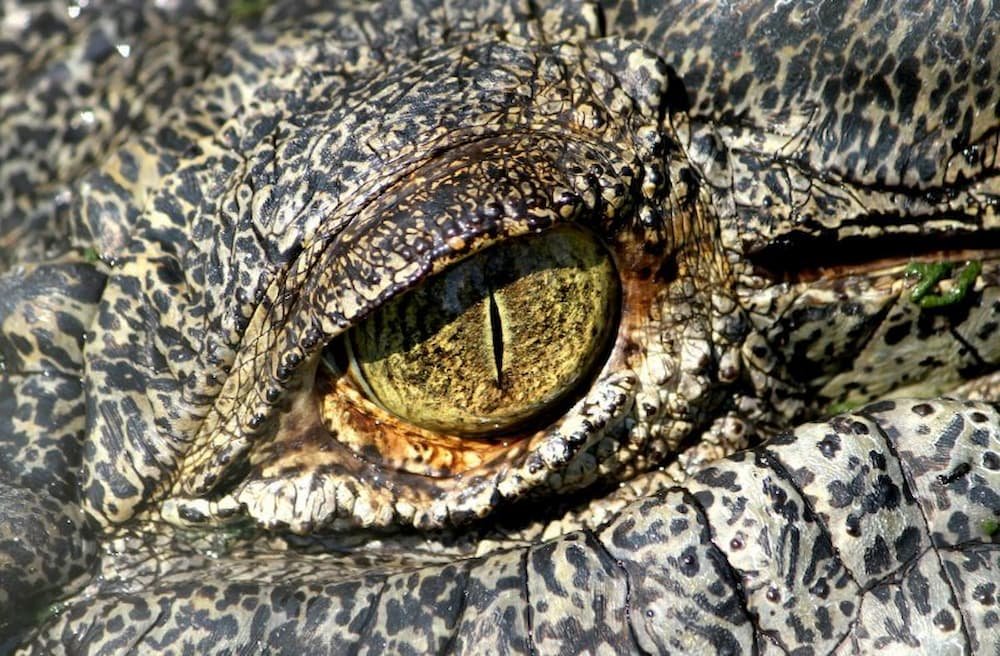
Don’t leave a visit to Australia without a trip to Northern Territory. ‘Nuff said.

Whether you’re looking for an adventure through the mountains or a relaxing trip to the beach, New Zealand is truly a place to satisfy everyone's travel desires. This relatively small country is only home to about 4.5 million people but boasts some of the most impressive scenery on the planet. If you go to New Zealand with a thirst for adventure, you will definitely not be disappointed.
One of the best ways to see the country is by taking a road trip in a camper van or RV. Last month my wife and I had the opportunity to do just that. We spent one week driving across the south island starting in Christchurch, ending in Queenstown and stopping everywhere in between. One week was not even close to enough time to explore everything New Zealand has to offer. One could easily spend 3 weeks just exploring the south island. Regardless of how much time you spend in New Zealand, it's guaranteed to be an epic adventure that you will never forget.
The following photos are from our Journey across New Zealand’s south island. Enjoy.
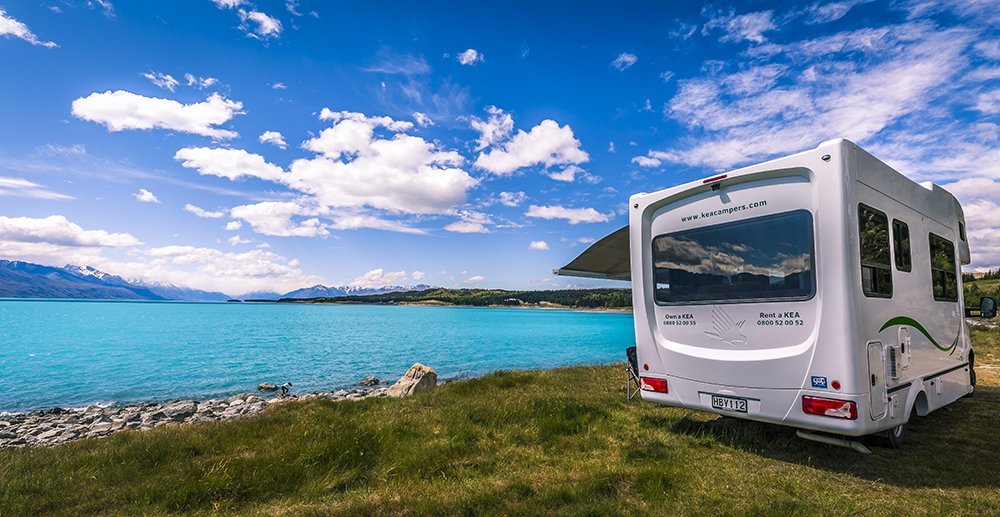


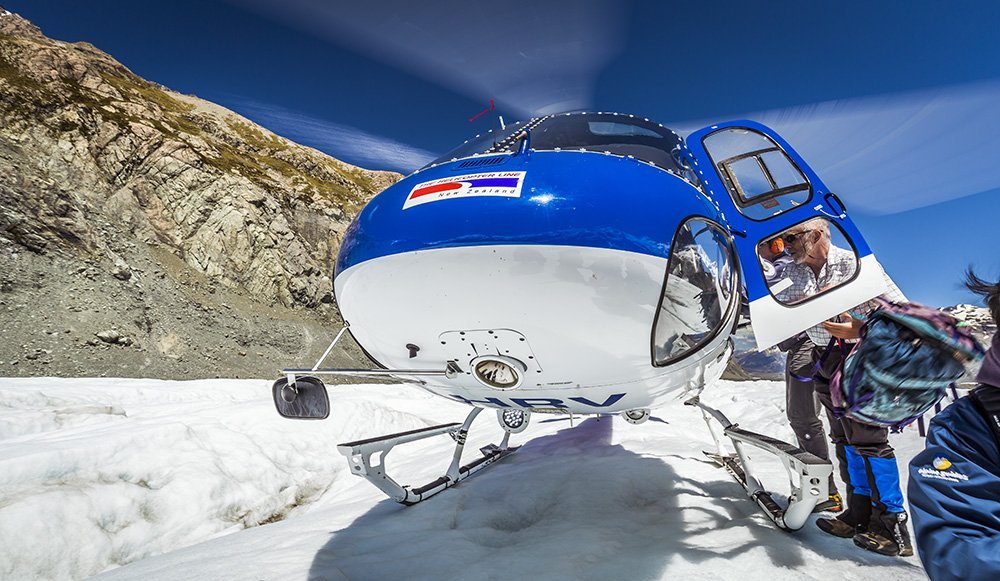




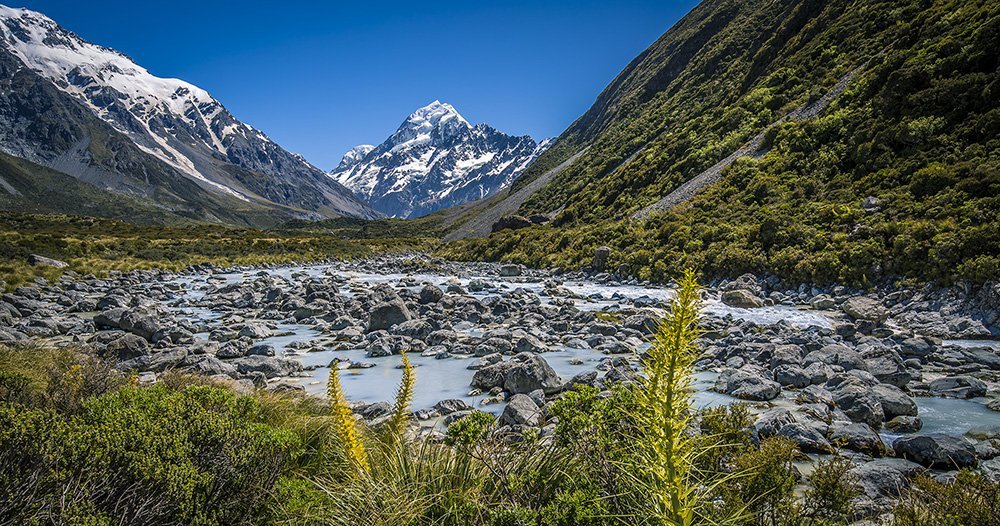




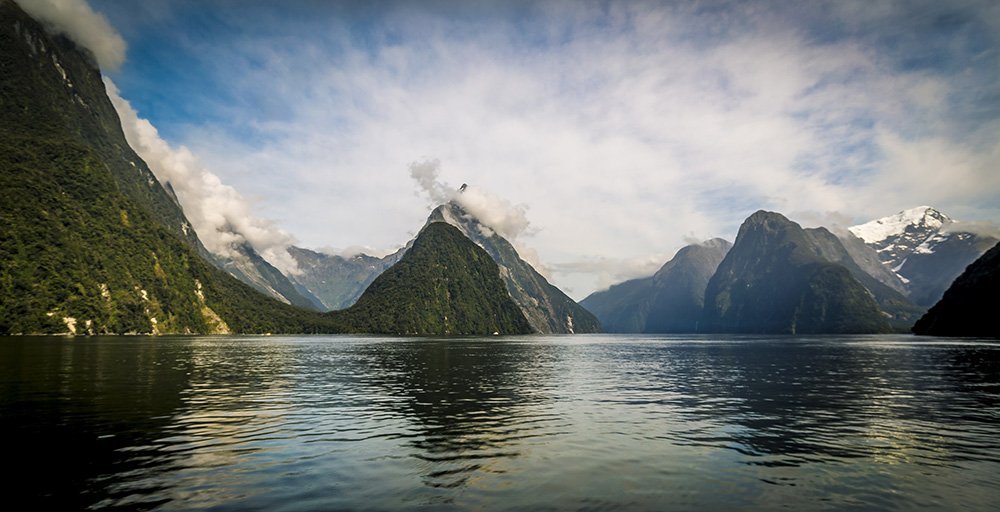


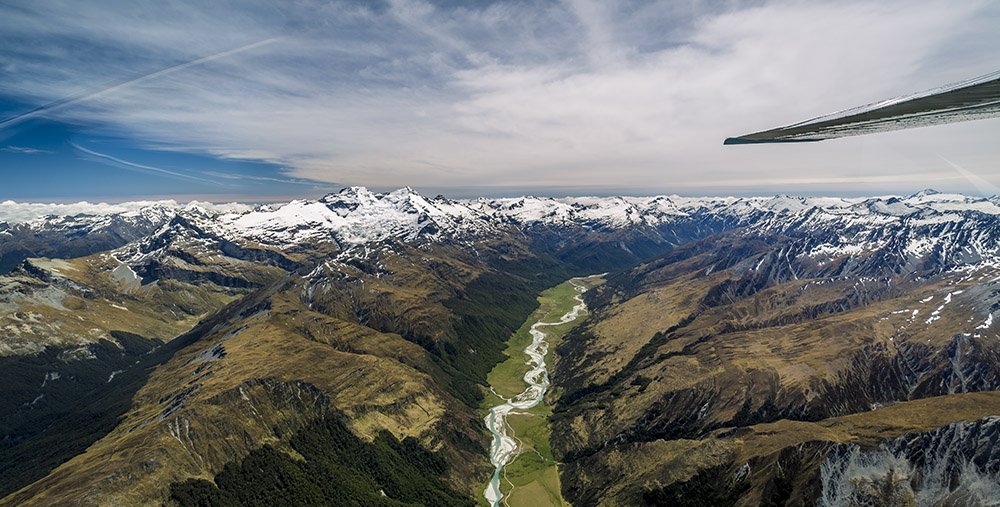
Myanmar, or Burma as it is also known, is a country in Southeast Asia that has, until recently, slipped under the radar of tourism for a long time. In 2011 the borders were reopened to tourists and people are now discovering the true beauty that lay hidden behind a military dictatorship for so many years.
In November of 2014, I was lucky enough to spend my honeymoon traveling throughout this wonderful country. It wasn’t long before we fell in love with this magical place. With the golden temples, the delicious street food, and the warm and welcoming local people, Myanmar has it all!
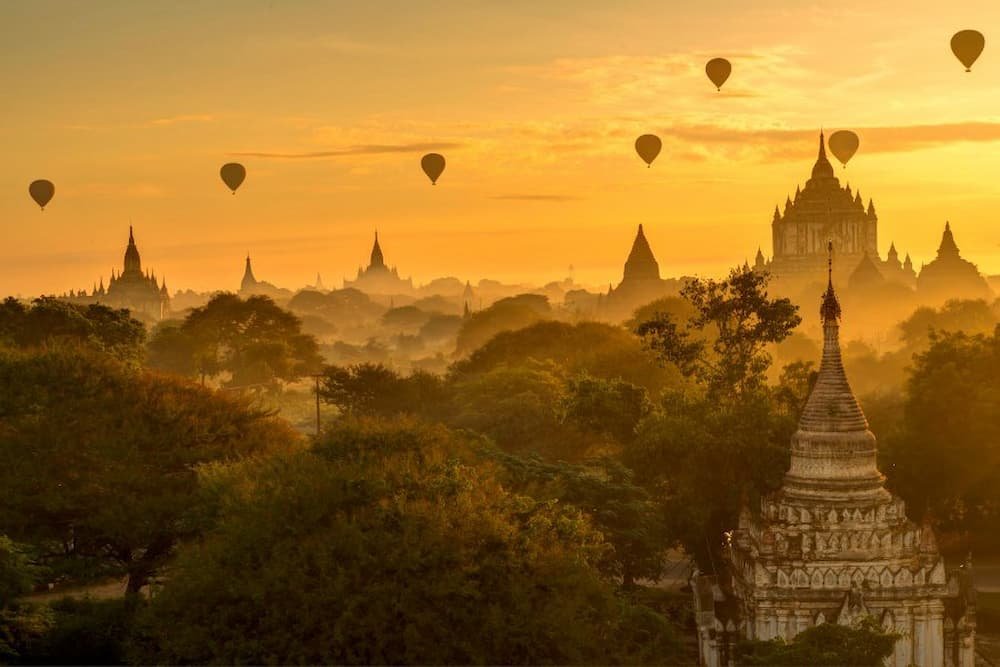
Since 2011, tourism has been rising exponentially. In 2016, it is expected that 5 million tourists will visit Myanmar, so, if after browsing the following photos you are considering a trip, book it quickly!
Each week we will be featuring a new destination here on Backpacker Travel, in the form of a photo journal. If you are interested in contributing or have a suggestion for a particular place, please get in touch here.



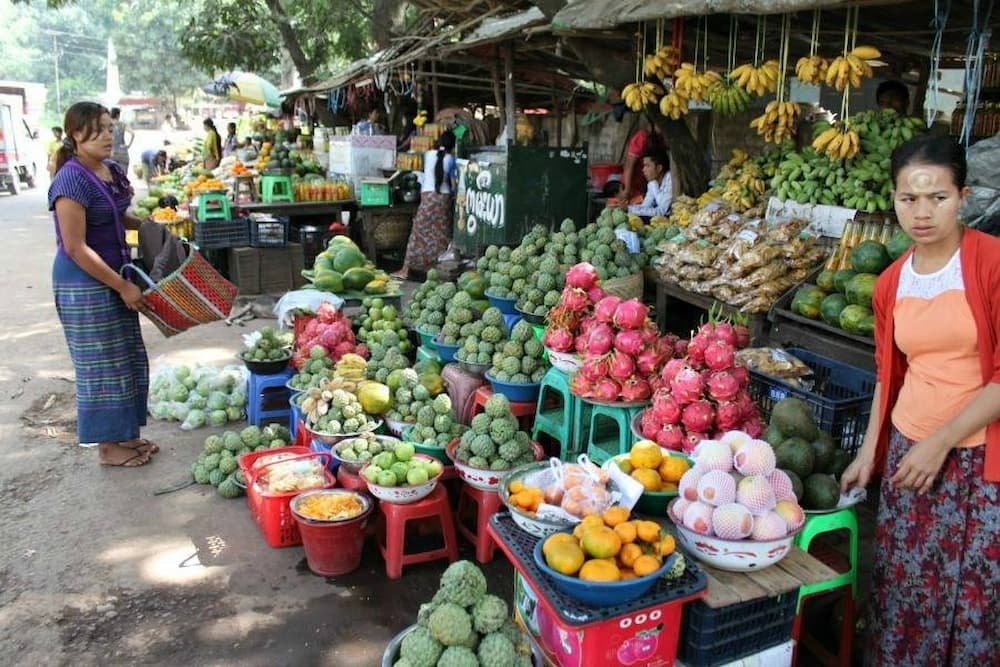

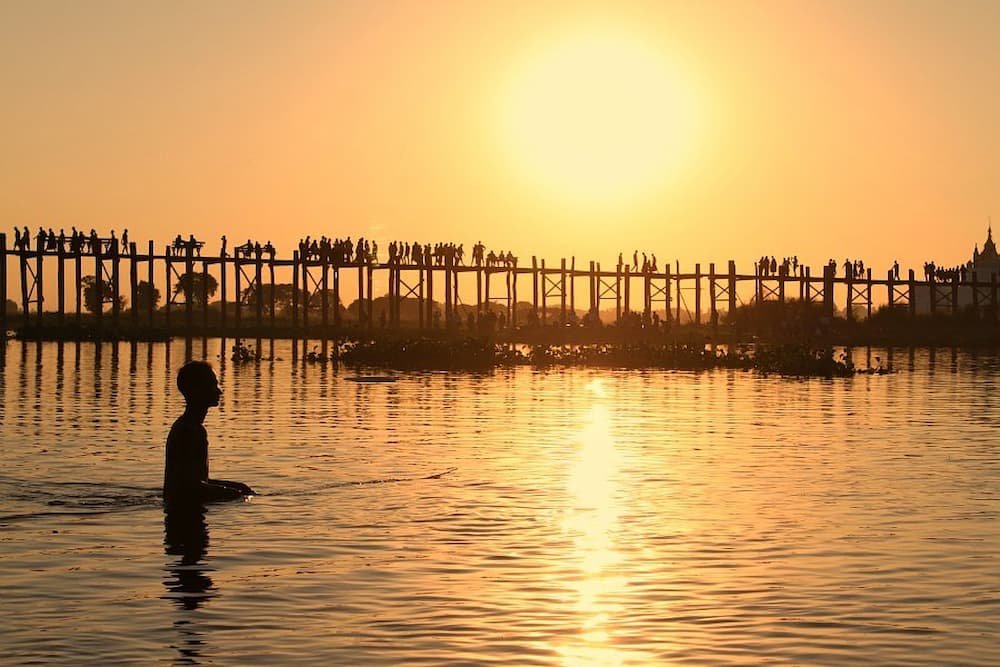
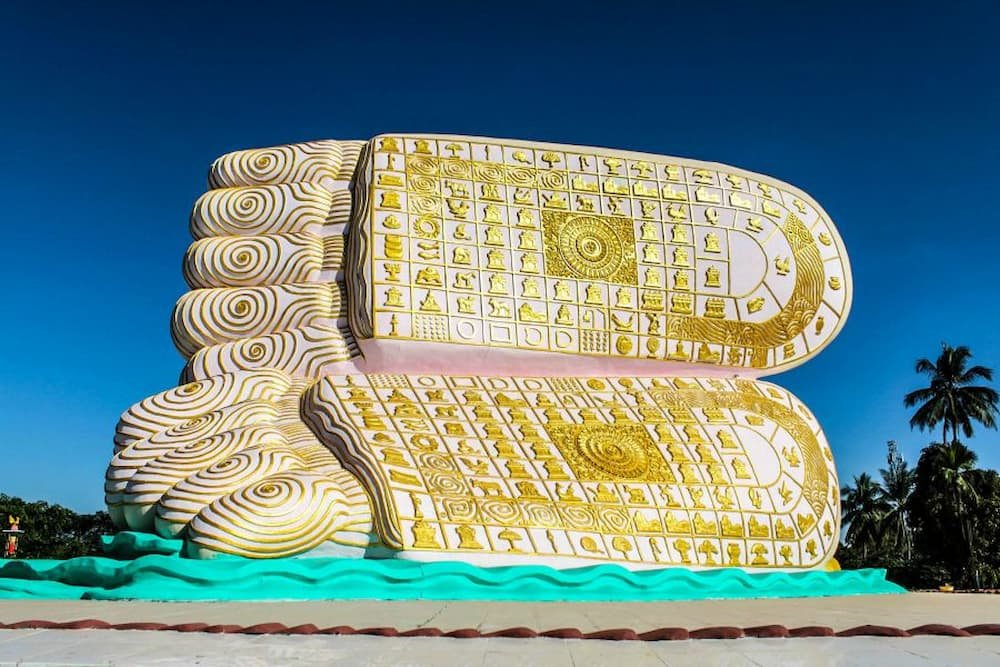

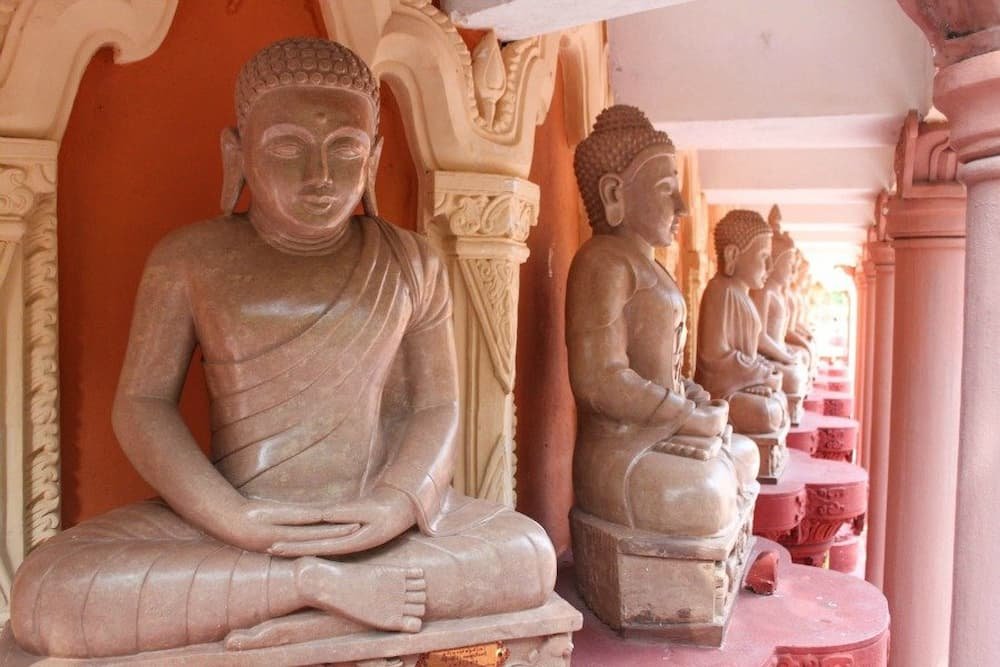

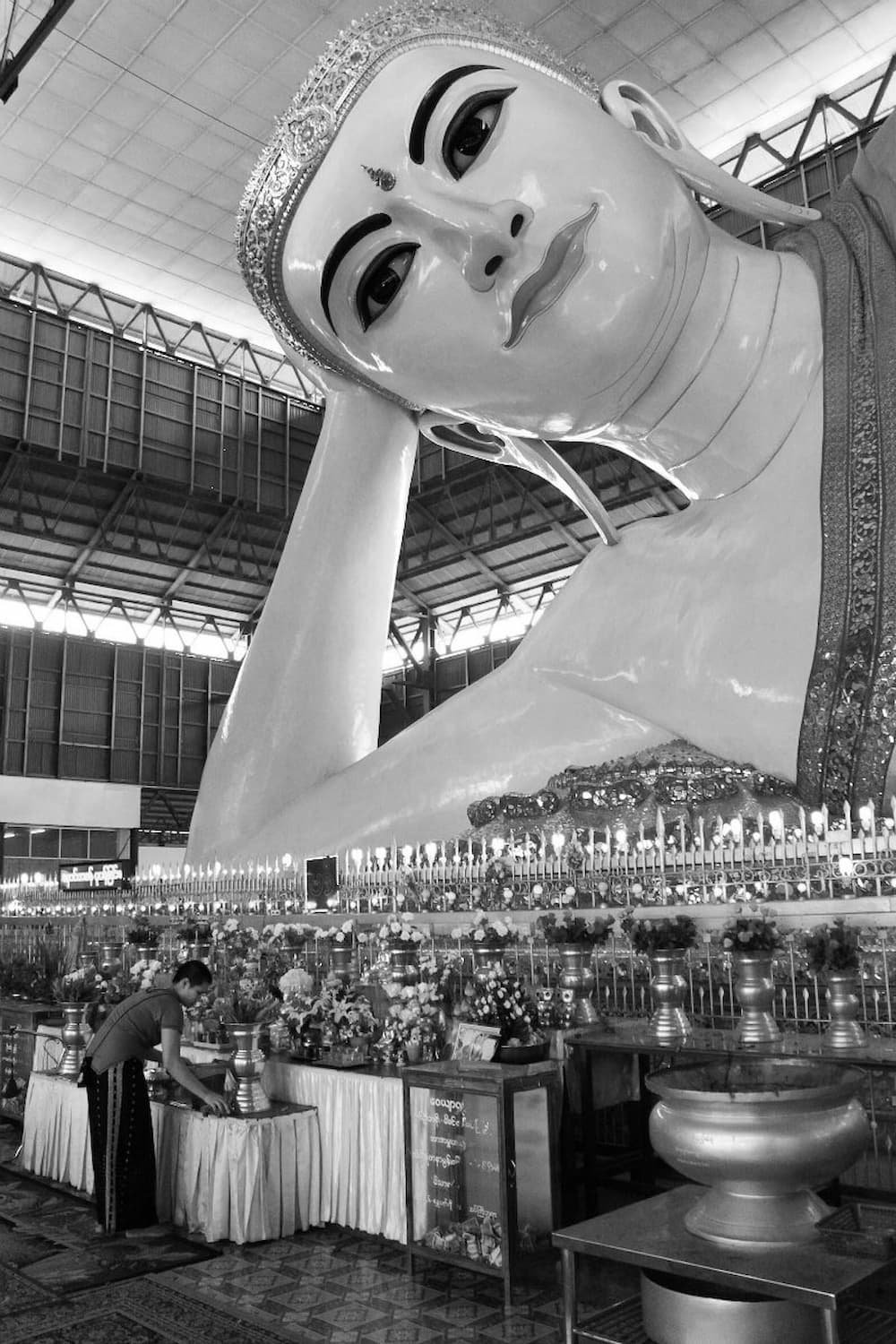
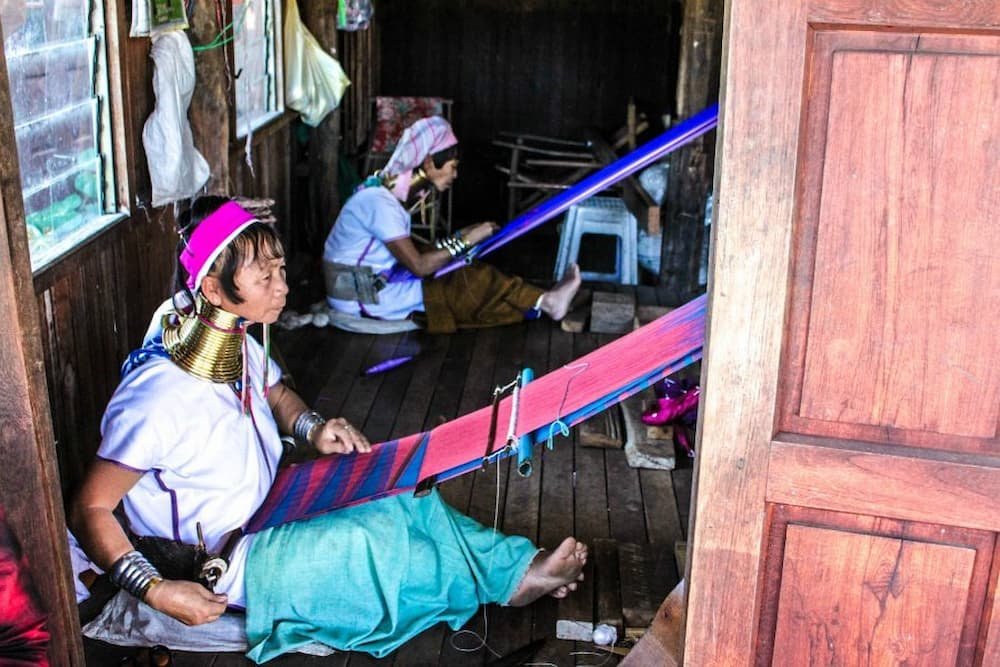
It is customary for the local tribe’s women to wear brass coils around their necks. This starts from as early as five years old, adding additional rings until around twenty years old. It is seen as a sign of beauty but can be a painful process.


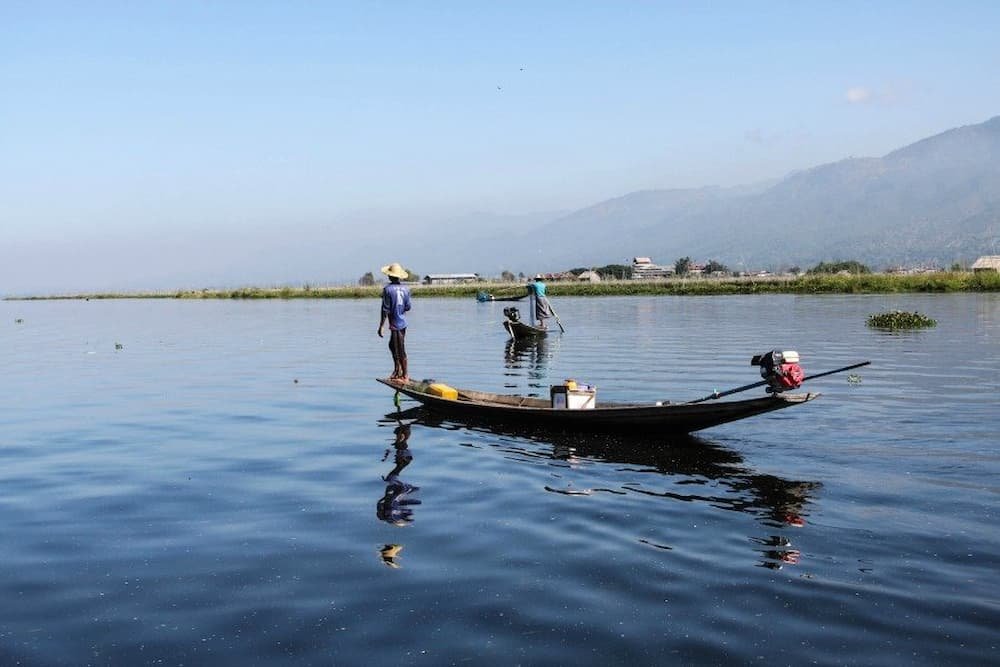









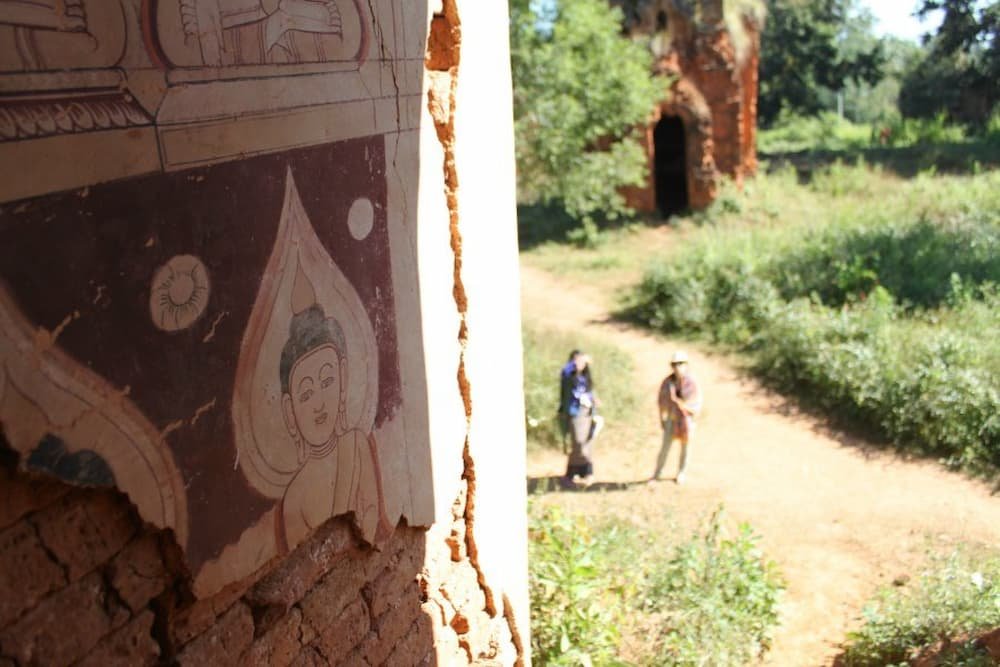



Moving to the Middle East gave me the opportunity to travel to so many exotic countries such as Kuwait, Egypt, Jordan, Turkey, Lebanon, Palestine, Bahrain, the U.A.E., and Oman. All of these countries are wondrous and gloriously beautiful, rich in culture, history, cuisine, and mystery. But it was my trip to Iran in July 2015 that really left a deep impression on my experience in the Middle East.

What did George Bush Jr. call Iran? Ah, yes, part of the Axis of Evil alongside North Korea and Iraq. So naturally, traveling to Iran for tourism sounds like a foolish and horrible idea. So why would I want to go there?
When people think of the Middle East and other Islamic countries, let alone Iran, they automatically think about religious extremism, women in black shadowy chadors, terrorism, poverty, war, human rights abuses, and anti-western sentiments. But this idea hasn’t stopped me from traveling throughout the Middle East and it didn’t stop me from traveling to Iran as a tourist.
Although tourism has picked up over the recent years, Iranians are still not used to seeing foreign tourists. So when my tour group would pull up and strut our way into each site with our canon cameras ready to capture our memories, we were a lot like celebrity spectacles. People would stare indiscreetly. Locals walked up and stood in front of us during our conversations as if trying to understand what we were talking about.
But most intriguing to them was the lone black girl in the group. Their stares towards me weren’t just indiscreet; they were hilariously shocked like they’d never seen a black person before! Come to think of it, I may have been the first black person a lot of Iranians there have ever seen in person. The only other black person I saw while I was there was myself looking back at me in a mirror.

The point of my visit was for me to unravel the mystery of Iran. Instead, I became the mystery in Iran. Wherever I went, I had children cautiously approach me then just stand there and stare at me with a big smile, and of course, I smiled back. When I said hello, they giggled in excitement and then ran off.
There were occasionally some children who even photo-bombed my selfies, had a good laugh, then ran away again! Could they tell that I was a teacher? Locals who were also visiting tourist sites approached my tour guide and asked if they could take a picture with me. Of course, it’s strange to take a photo with a complete stranger… unless you’re a celebrity!
People went out of their way to approach me from the other side of the street just to strike up a conversation and simply asked if I was enjoying Iran. Everyone automatically thought that I was American and forced their children to speak English with me; they were proud of their children and I indulged them by speaking with them for a few minutes and answering their questions.
“Where are you from?”
“How do you like Iran?”
“Are you married?”
“Can I take your picture?”
It even got to a point where people started sneaking pictures of me from their smartphones. Like a celebrity, I felt like I had no personal space and no privacy. I couldn’t just blend in and take in the sights of Iran. I had to act accordingly because I felt like I was representing black people, if not North American foreigners.
I am sure they wondered a lot about me. Is she nice? Does she speak funny? Does she rap? I could only imagine. I just hope that they found me to be pleasant.
Like most celebrities, all that attention can get too much and on one’s nerves. I remember entering the famous Azadeh Café in Esfahan. As soon as I walked in, everyone literally froze and stared at me in shock! Playfully I yelled, “Tadaaaa!” I couldn’t help it! Why not give them a show if they were treating me like one. But no one really laughed. My attempts to lighten the atmosphere failed because I could still feel their eyes burning through me. I began to feel very self-conscious and uncomfortable. I began to imagine what they were thinking or saying about me. But, I couldn’t let my new fans know how they made me feel. So, I occasionally looked up from my travel diary and nervously smiled at anyone watching me. They smiled back.

Is Iran diverse in the same sense as Kuwait, the Middle East, and the West? Sort of….locally, yes. You can see Kurds, Turks, etc. But not in the international sense where you can see pockets of Spanish, Italian, Greek, Jamaican, and Brazilian communities. Not the sort of diversity I am used to seeing in North America. Do they love and appreciate foreigners visiting their country? Yes! Everyone who randomly approached me during my two-week visit wholeheartedly welcomed me to their country and in their words said, “…wish you to see the real Iran, not the bad Iran everyone thinks it is.”
I was a big mystery to Iranians, as Iranians were a big mystery to me. Luckily, we were all pleasantly surprised by each other. To me, the mystery of Iran was solved: Iranians are not so mysterious after all.
We put up walls of isolation. Out of isolation comes mystery. Out of mystery comes curiosity. Out of curiosity comes the truth. Well here’s the truth; Iranians are just like you and me and somewhat like the rest of us trying to live in this world.


So go to the Middle East! Go to Iran! Much of the Middle East is just as safe as the rest of the world can be.
There are places you visit in your life as a traveler that resonate particularly with you and make you say “I’ll probably go back someday”. And then there’s Kenya and its majestic Maasai Mara National Reserve. A Noah’s Ark of wildlife that brings these beautiful landscapes to life. A place you end up leaving, thinking: “How soon can I go back?”
Located in the South West of Kenya, the Maasai Mara is contiguous with the Serengeti National Park in Tanzania. Home of the Maasai people, it is globally famous for its exceptional wildlife, and for hosting one of the most incredible natural events in the World – the Great Migration. A place where Disney found inspiration for Simba (Lion in Swahili), Pumbaa (Warthog in Swahili) and all the characters and story of the Lion King.
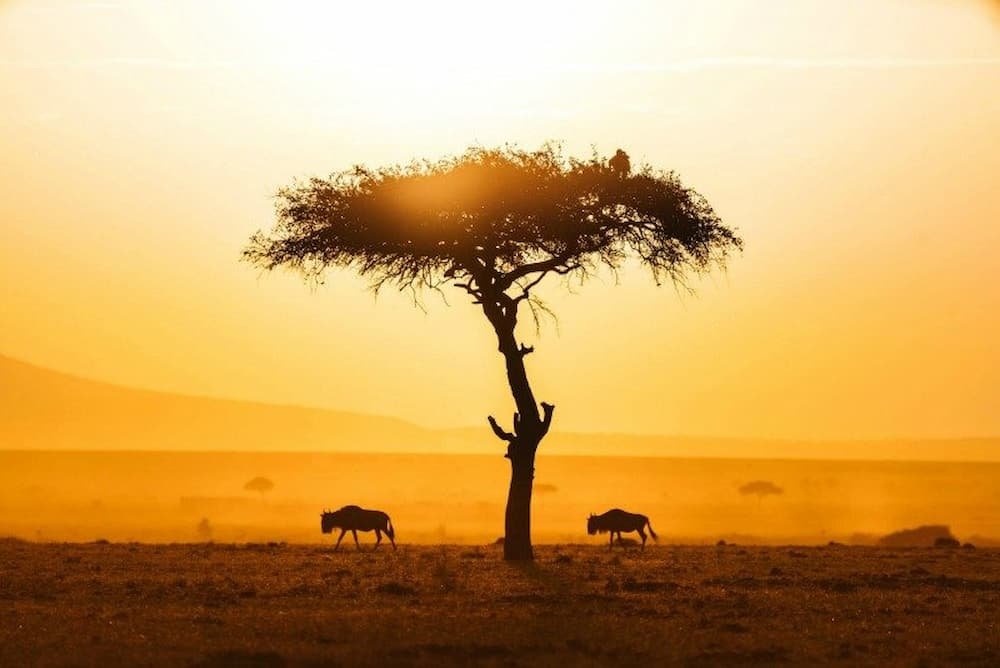
Every day in the Mara is like a new adventure. Inside your jeep, with no protection and no particular path to follow, you drive around this incredible place that gives you a feeling of what the Earth looked like before the human race took it over. There, lions are the kings of the land. Elephants are freely roaming and breaking trees, here and there. Giraffes are graciously eating the leaves of the tallest trees. Hippos and crocodiles share the Mara River, which twice a year about 1.5 million wildebeest and zebras have to cross during the migration.
A spectacle even better than in any of your dreams!

Zebras tend to live in small harems, and are very common in the Mara. I couldn’t resist shooting this reflection of them, drinking in a water hole.



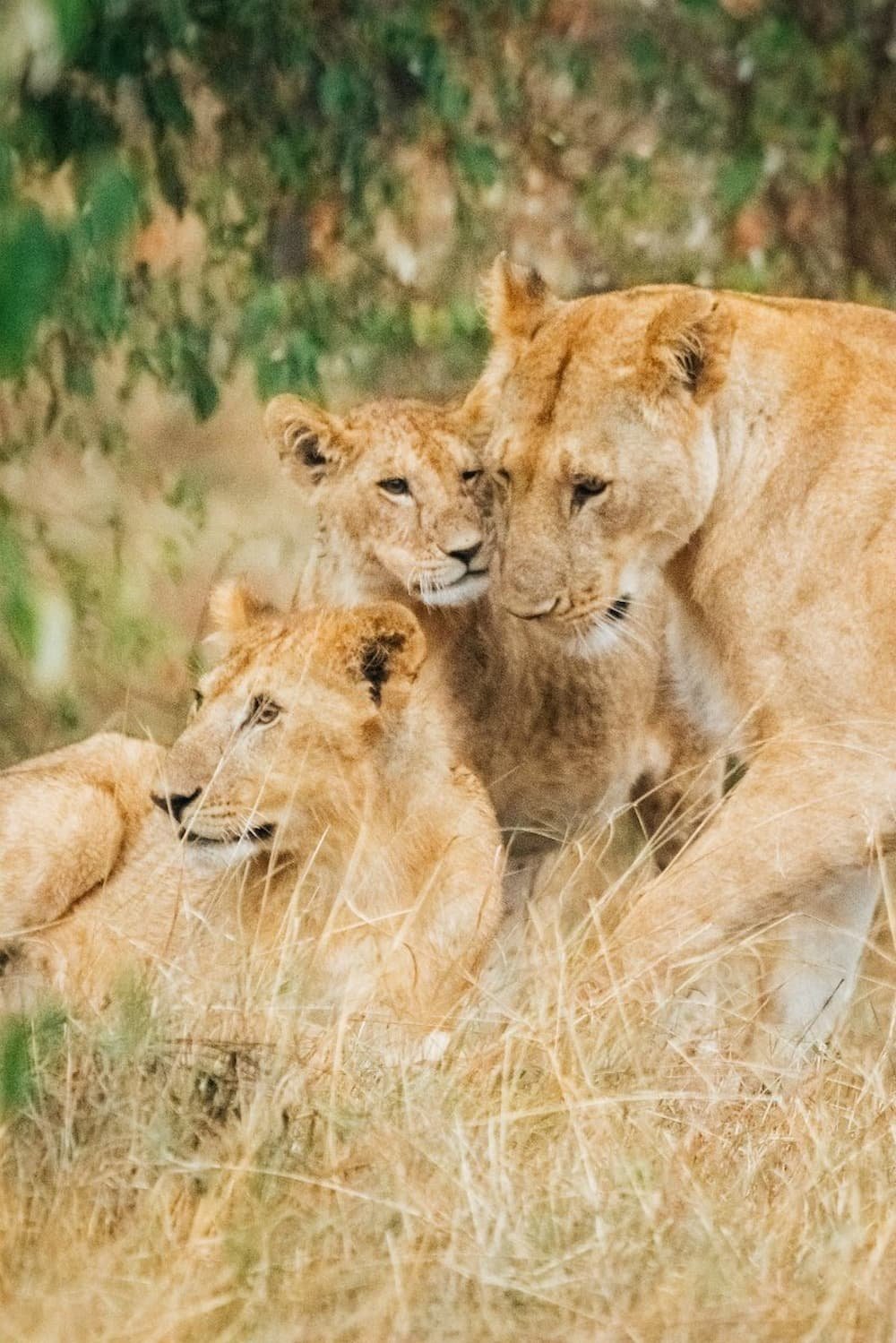

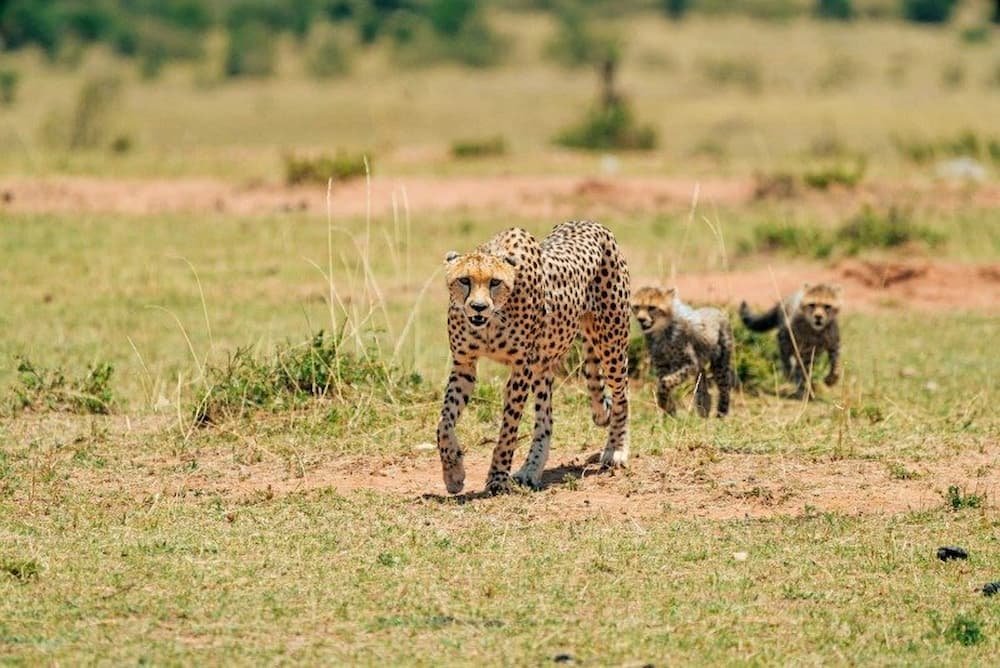




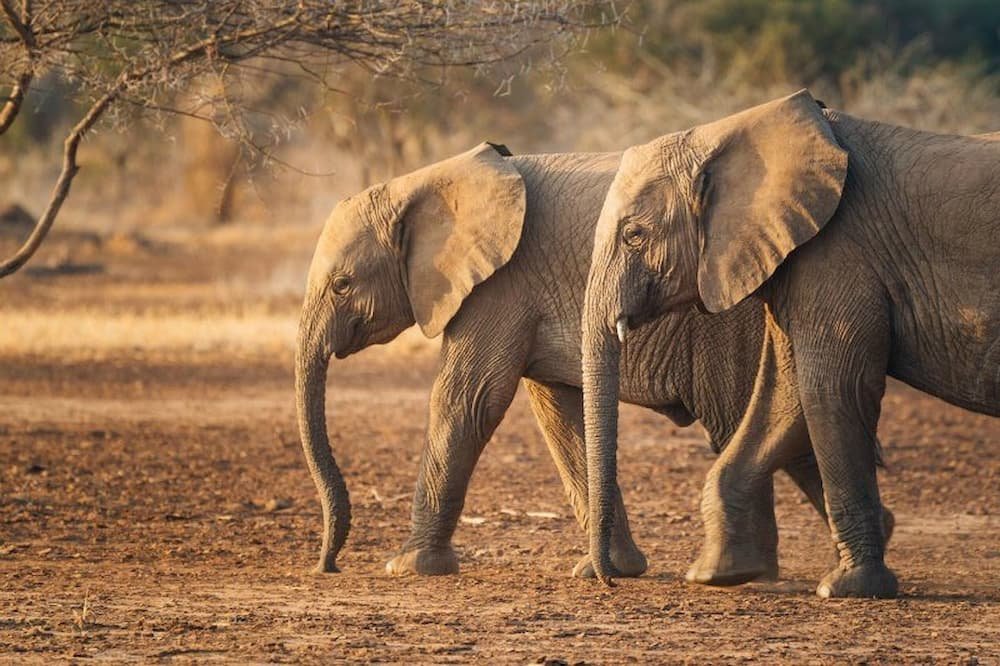
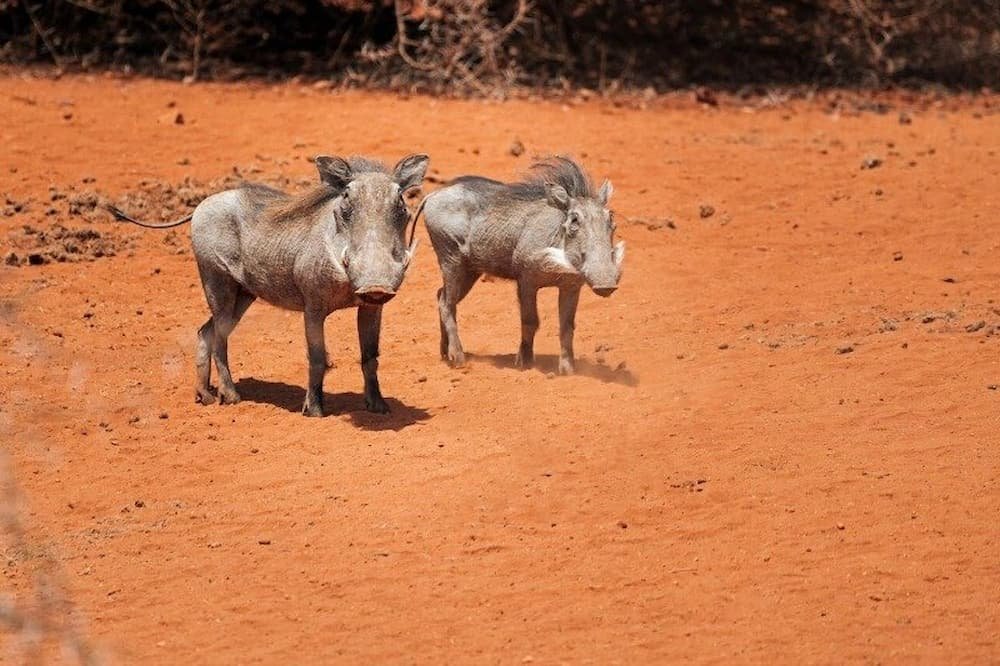


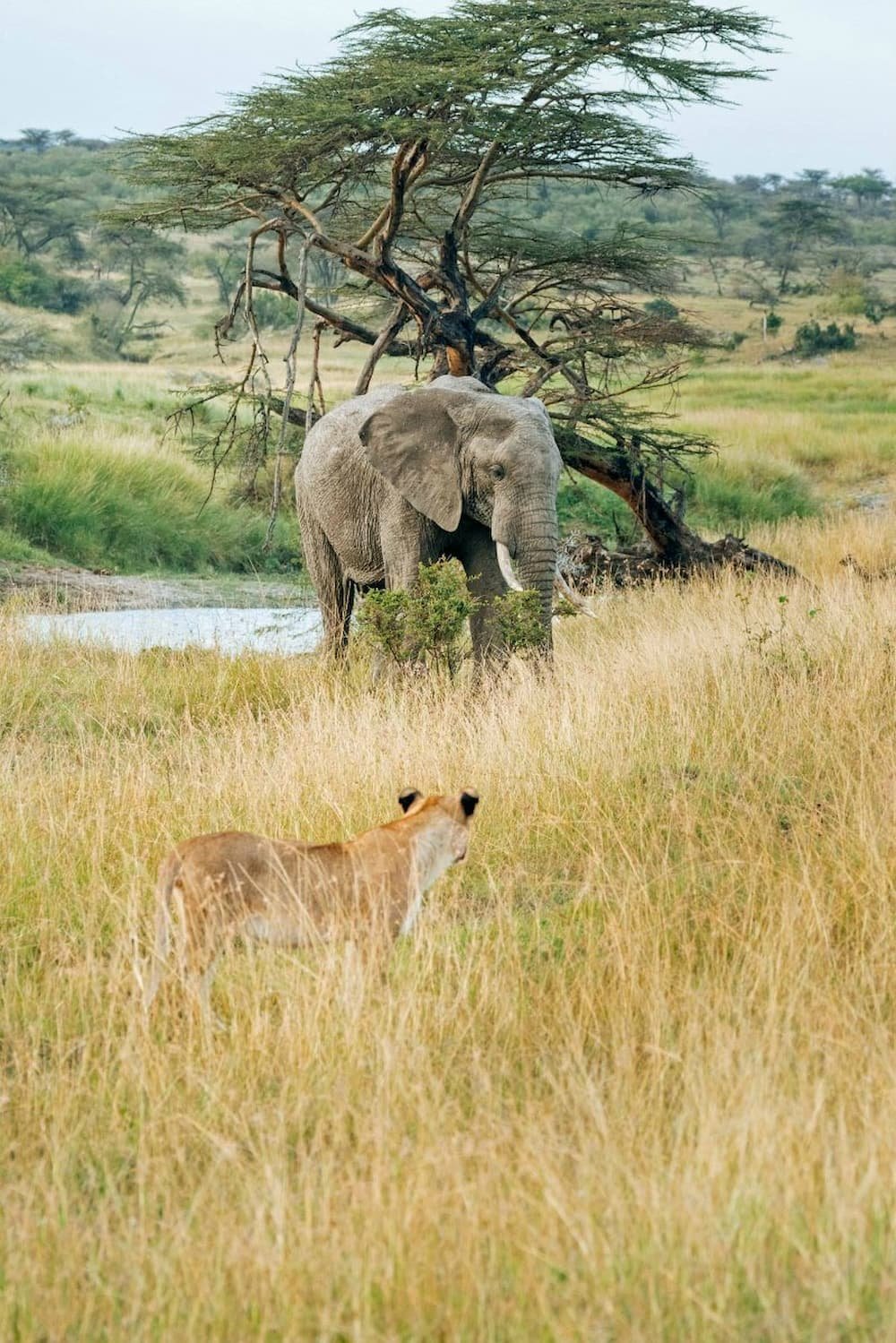
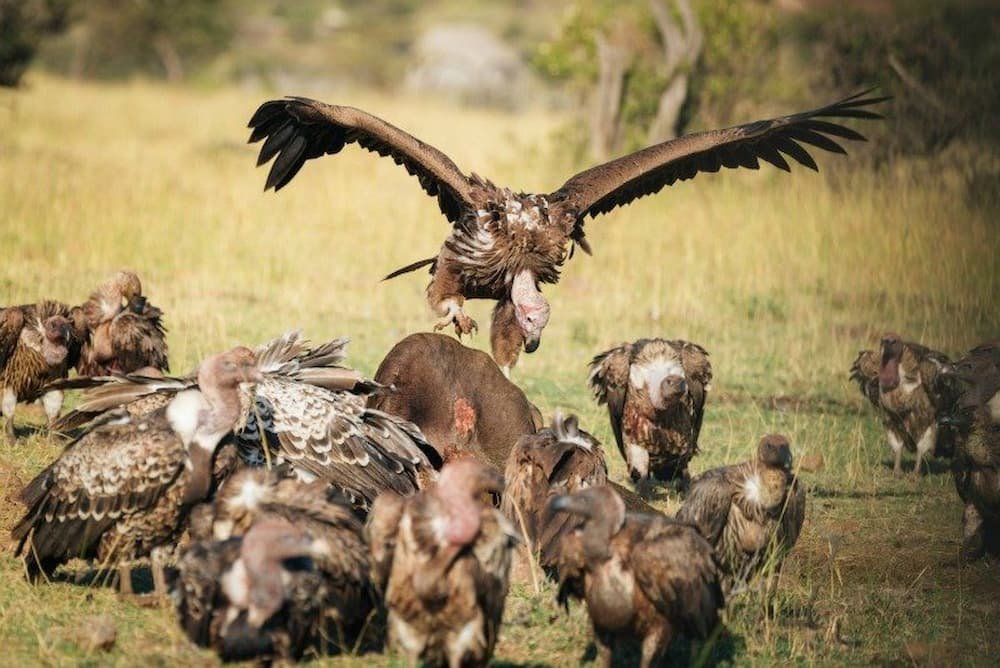

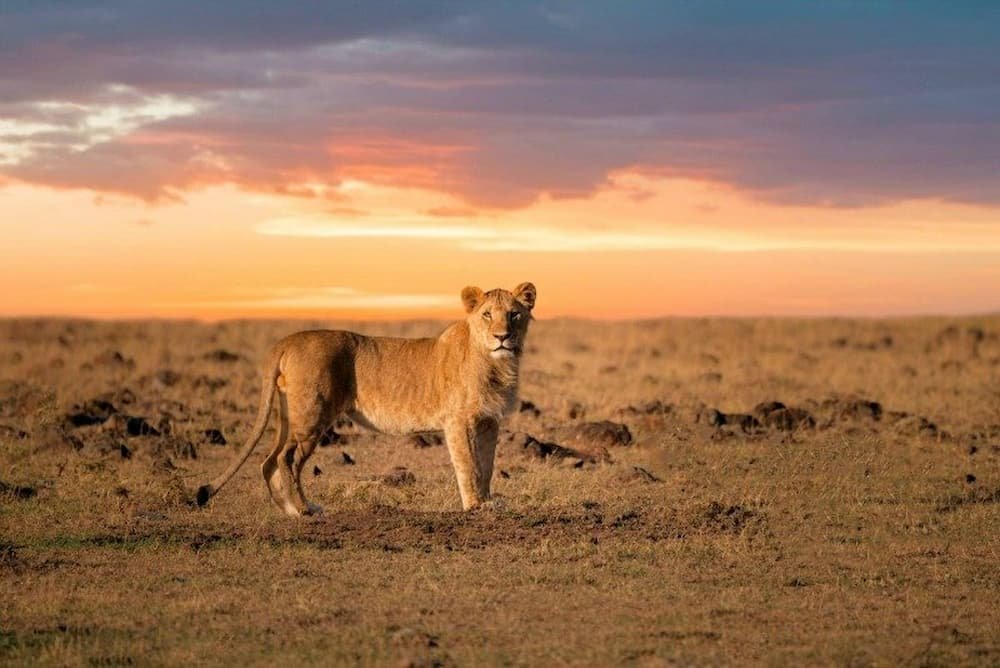

Have you had the opportunity to make it to Africa yet? If so, we’d love to hear about your experience in the comment section below. Were you as enthralled as I was? What were your highlights and where did you go?
Last month we celebrated our four-year anniversary living in San Francisco and in that time, I have managed to explore every neighborhood in this fascinating city. It’s no secret that I have fallen in love with the art, music, food, and people, which lead me to create Boutique Traveler tours in San Francisco as a way to show travelers my adopted home.
Lately, I have been working on a new tour itinerary that will take visitors on an art discovery through the streets of the famous Mission District. The following photos were taken along Clarion Alley, one of the best places to find local street art in San Francisco.
Clarion Alley is a small street between Mission and Valencia Streets and 17th and 18th Streets, notable for the murals painted by the Clarion Alley Mural Project.



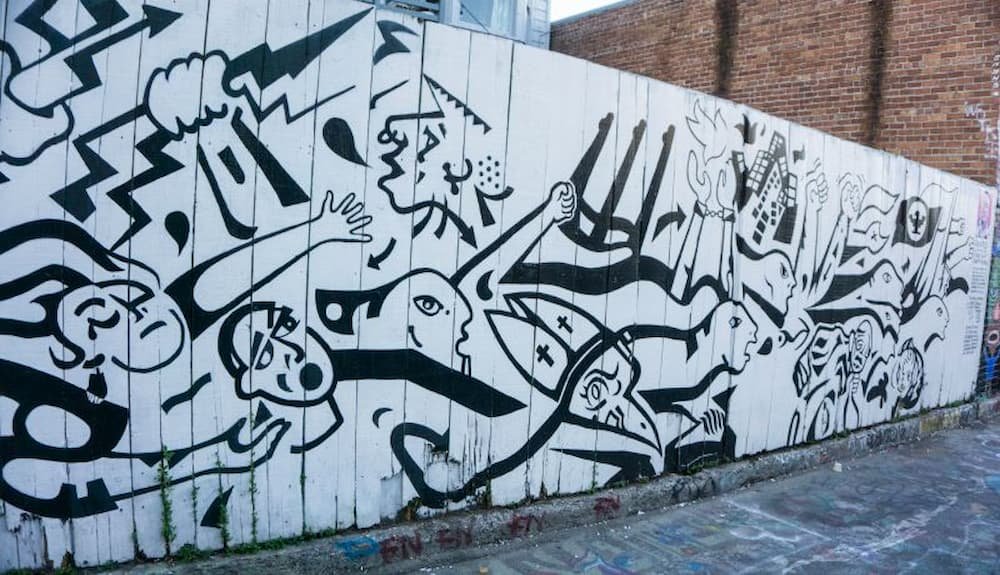







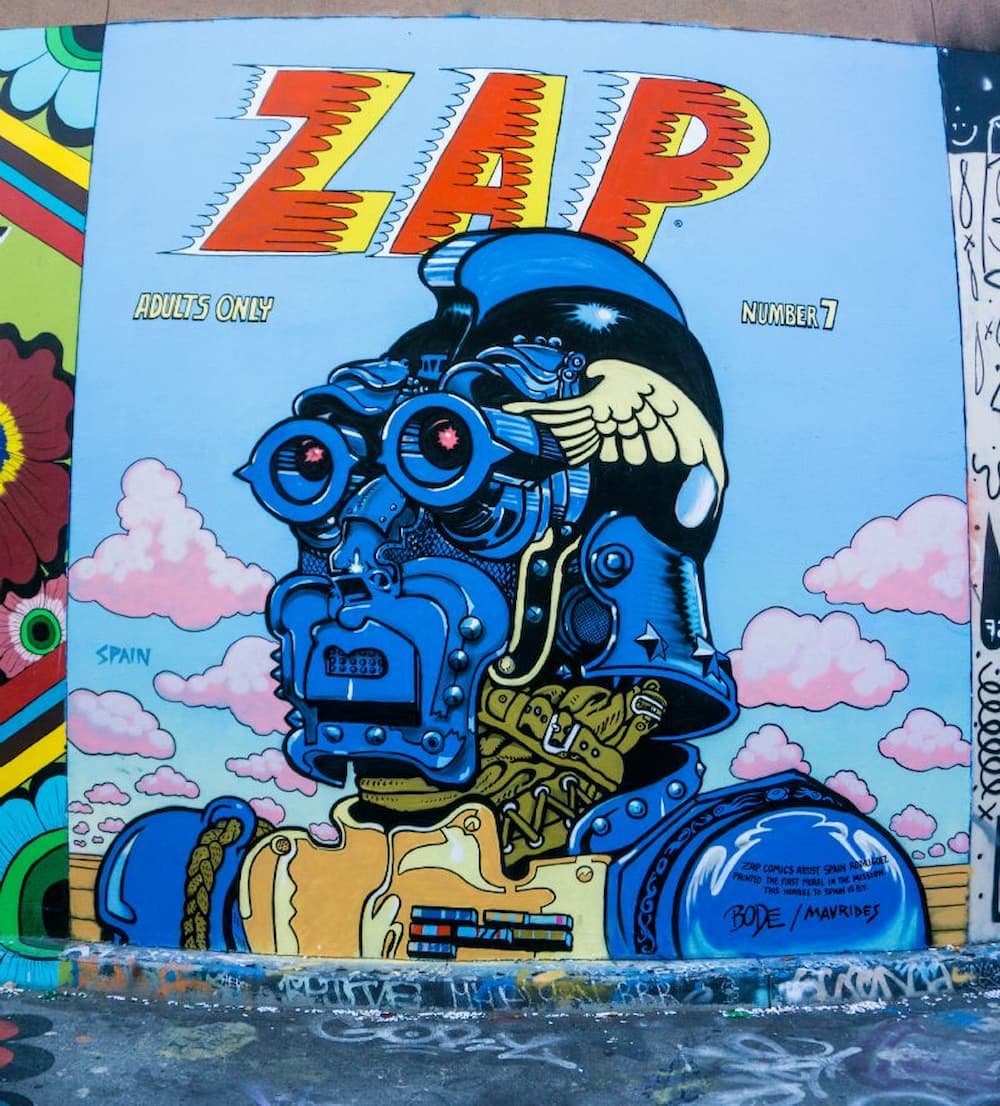
This is just a tiny sample of the multitude of street art to be found in San Francisco. While the Mission neighborhood is renowned for these murals, there are pieces to be found in every corner of the city.
Now it’s your turn – Which city have you visited that had amazing street art like this?
